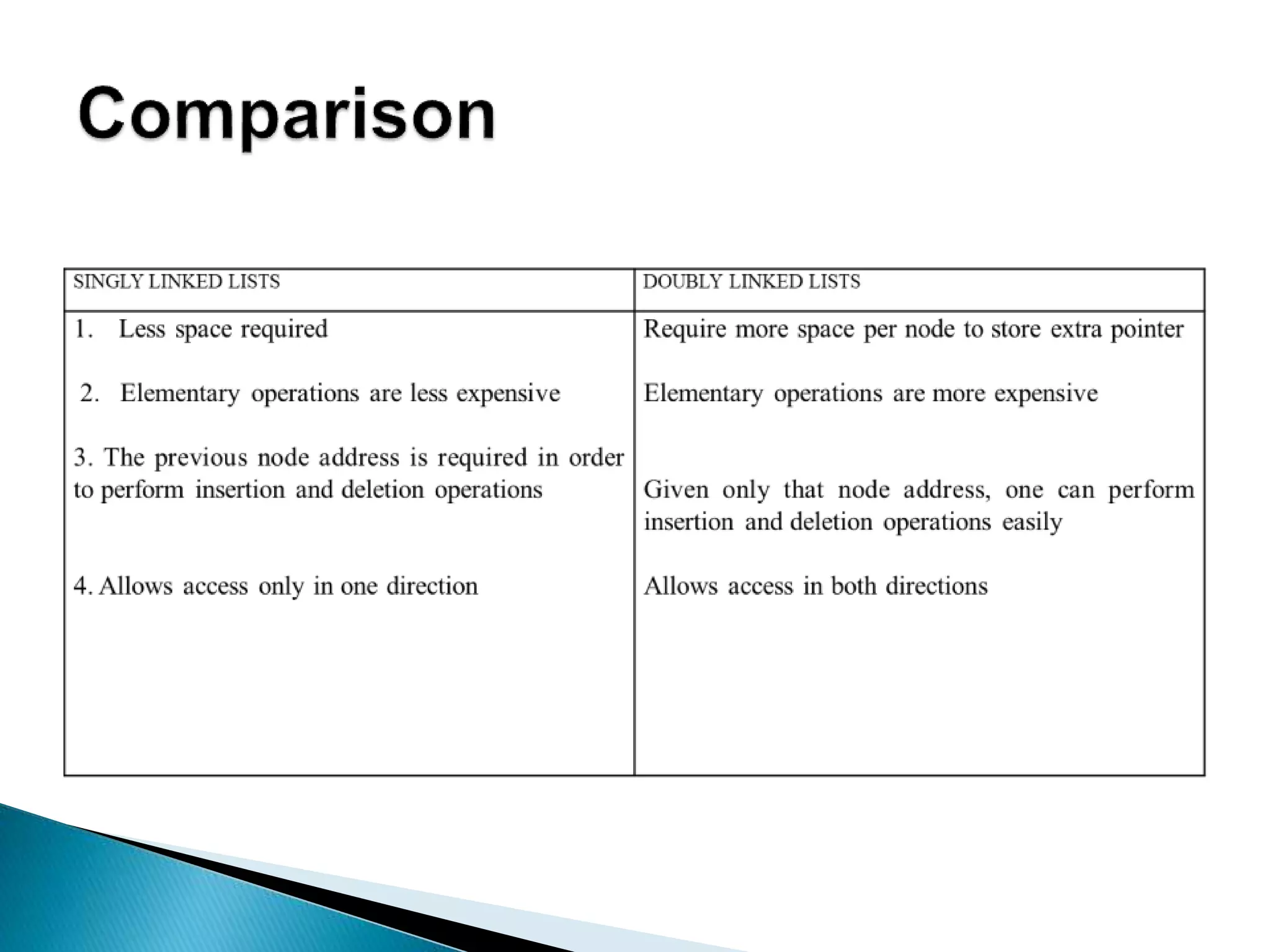The document discusses linked lists, which are a data structure made up of nodes that are connected to each other via links. Each node contains a data field and a link field pointing to the next node. The last node's link points to null to indicate the end of the list. Linked lists allow dynamic memory allocation and easy insertion/deletion of nodes. Common operations on linked lists include traversing the list, inserting nodes, deleting nodes, and searching for a node. Doubly linked lists are also discussed, where each node contains links to both the previous and next nodes.


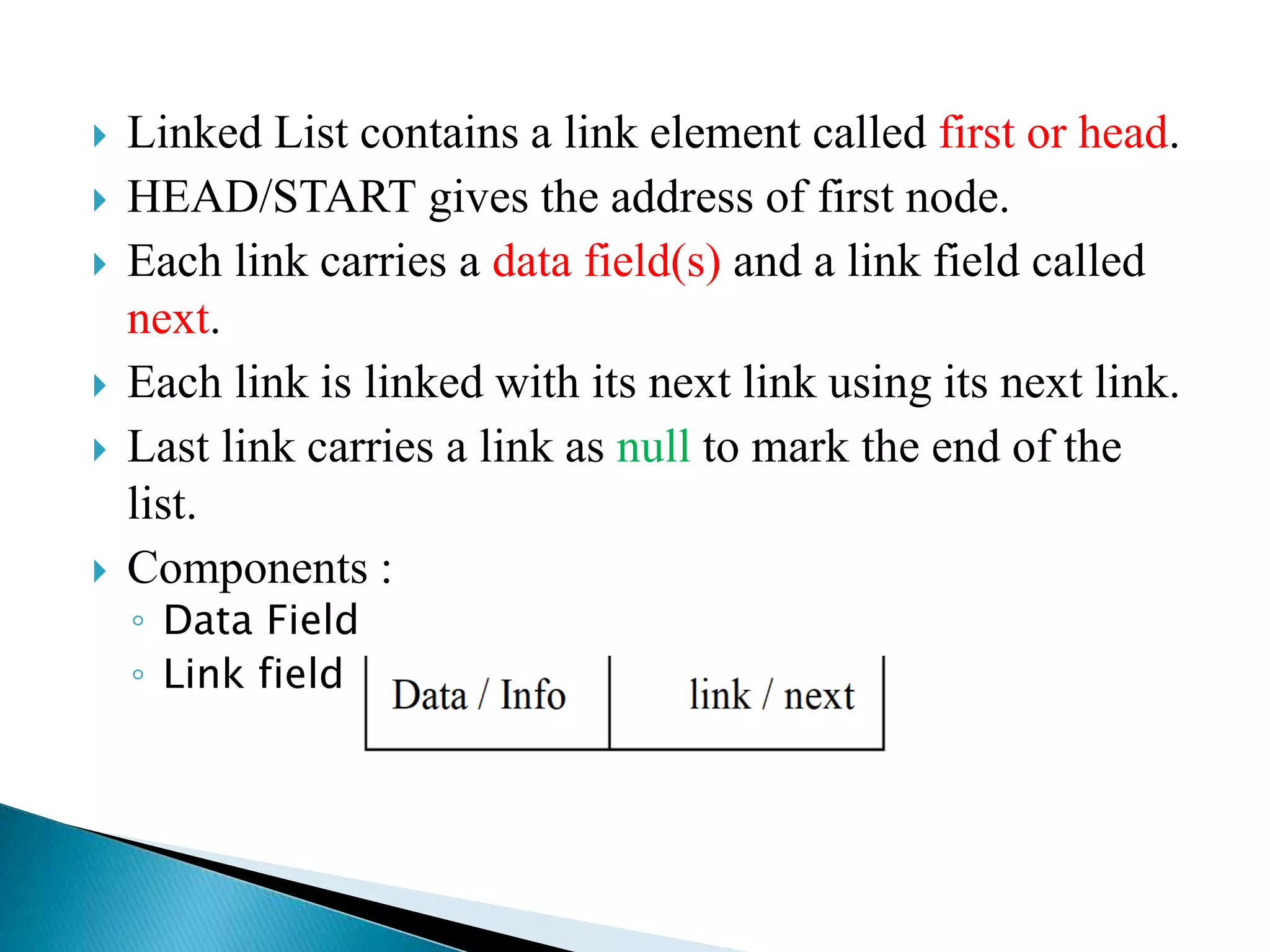
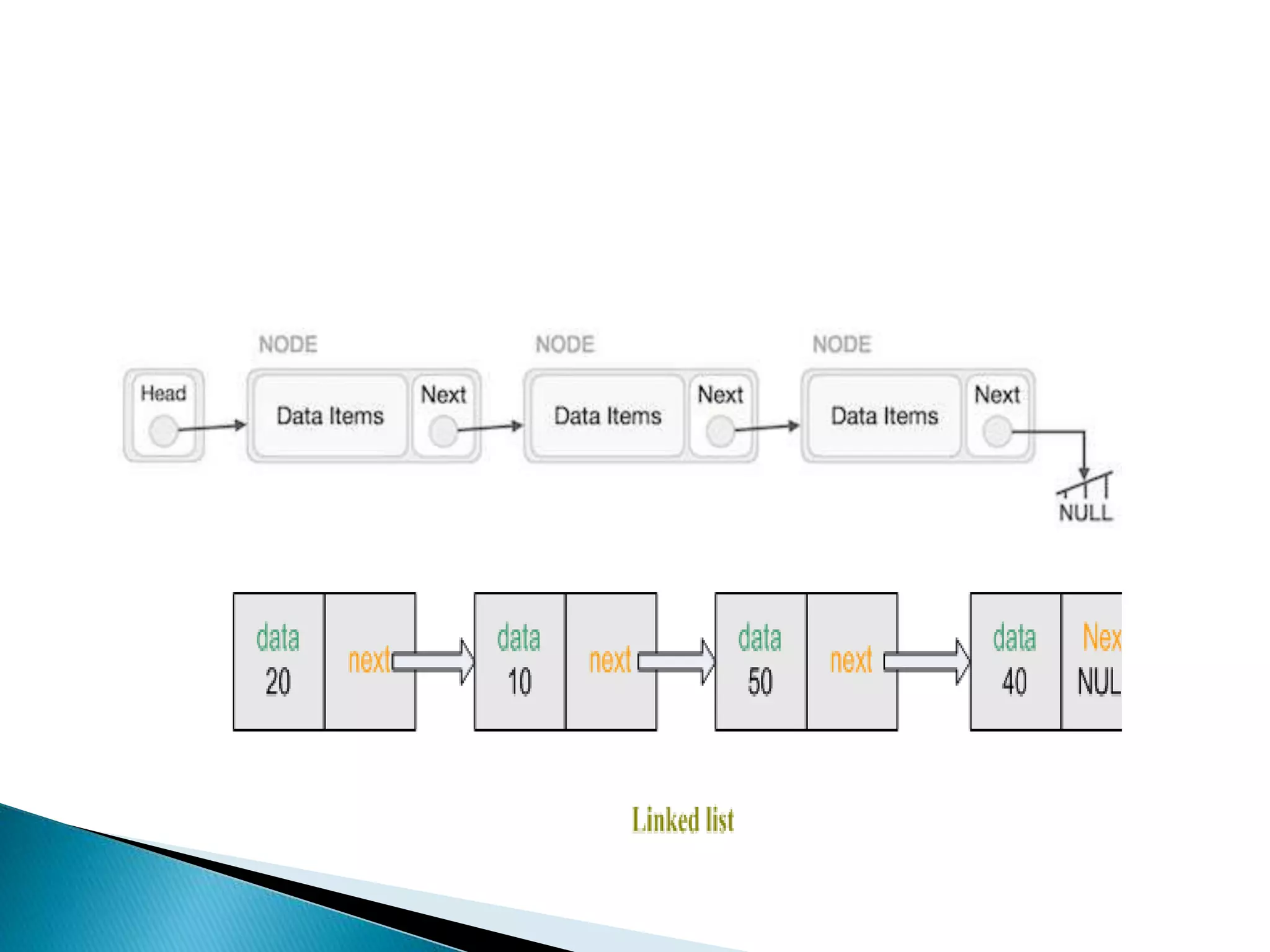
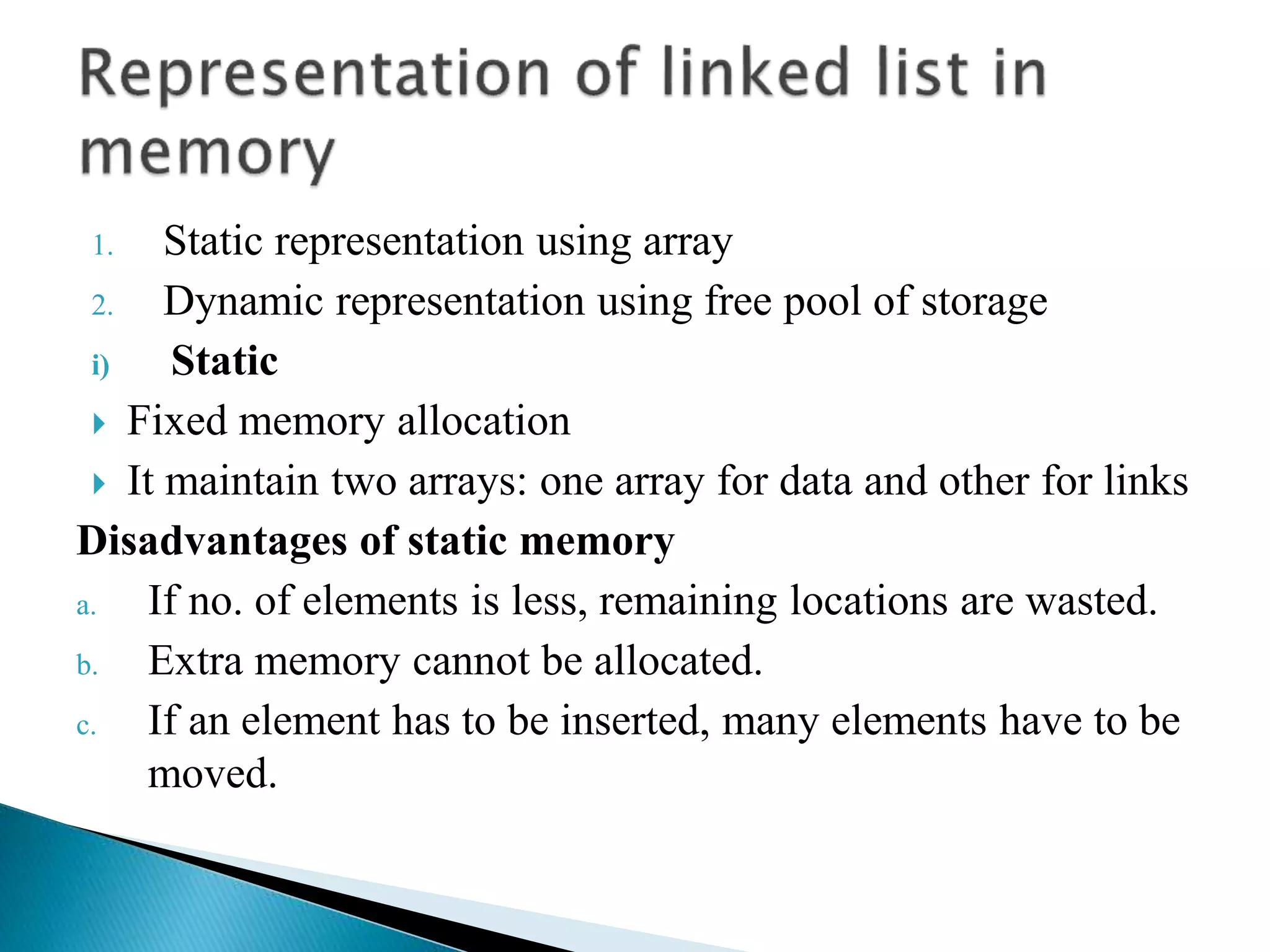
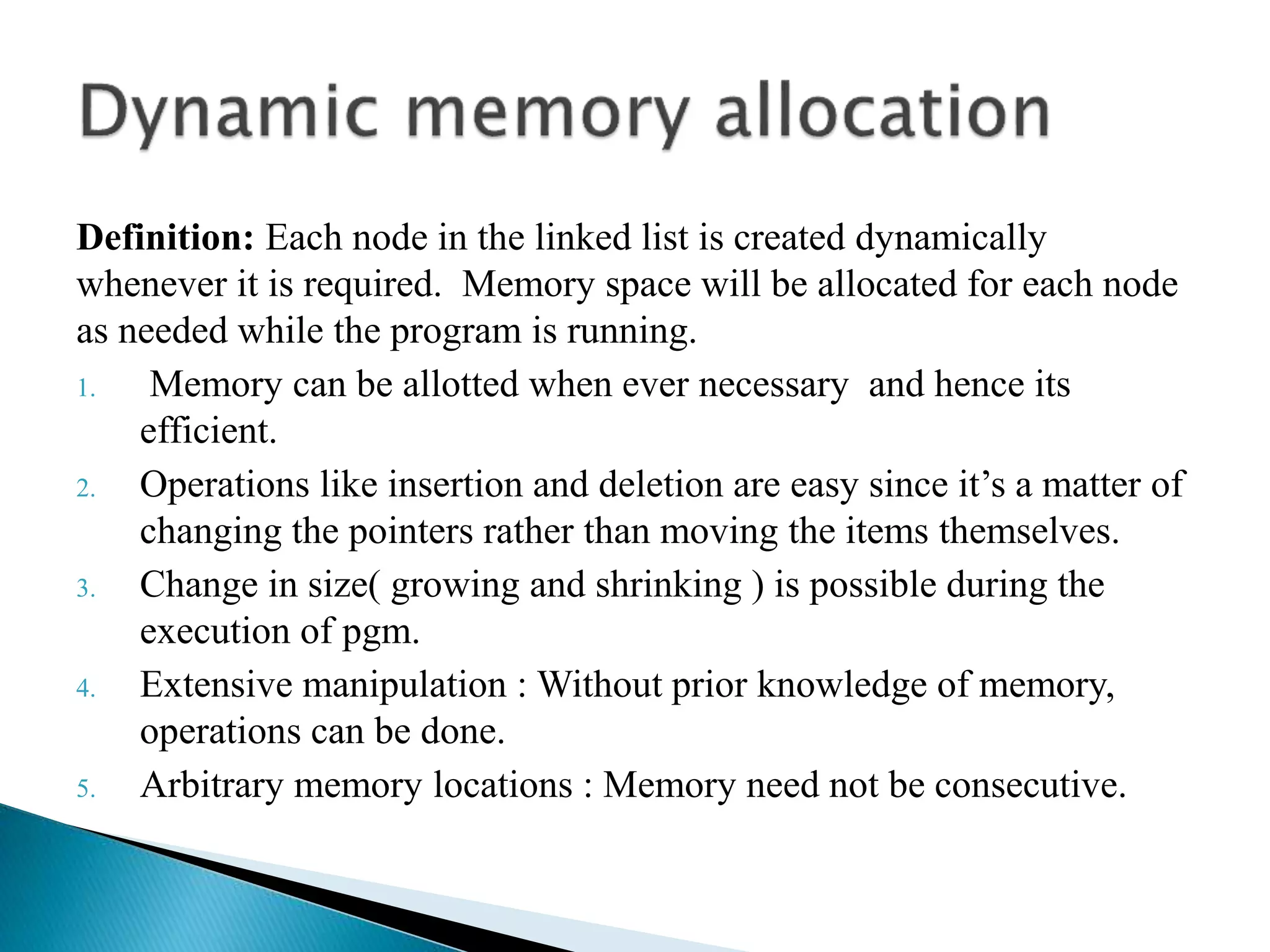

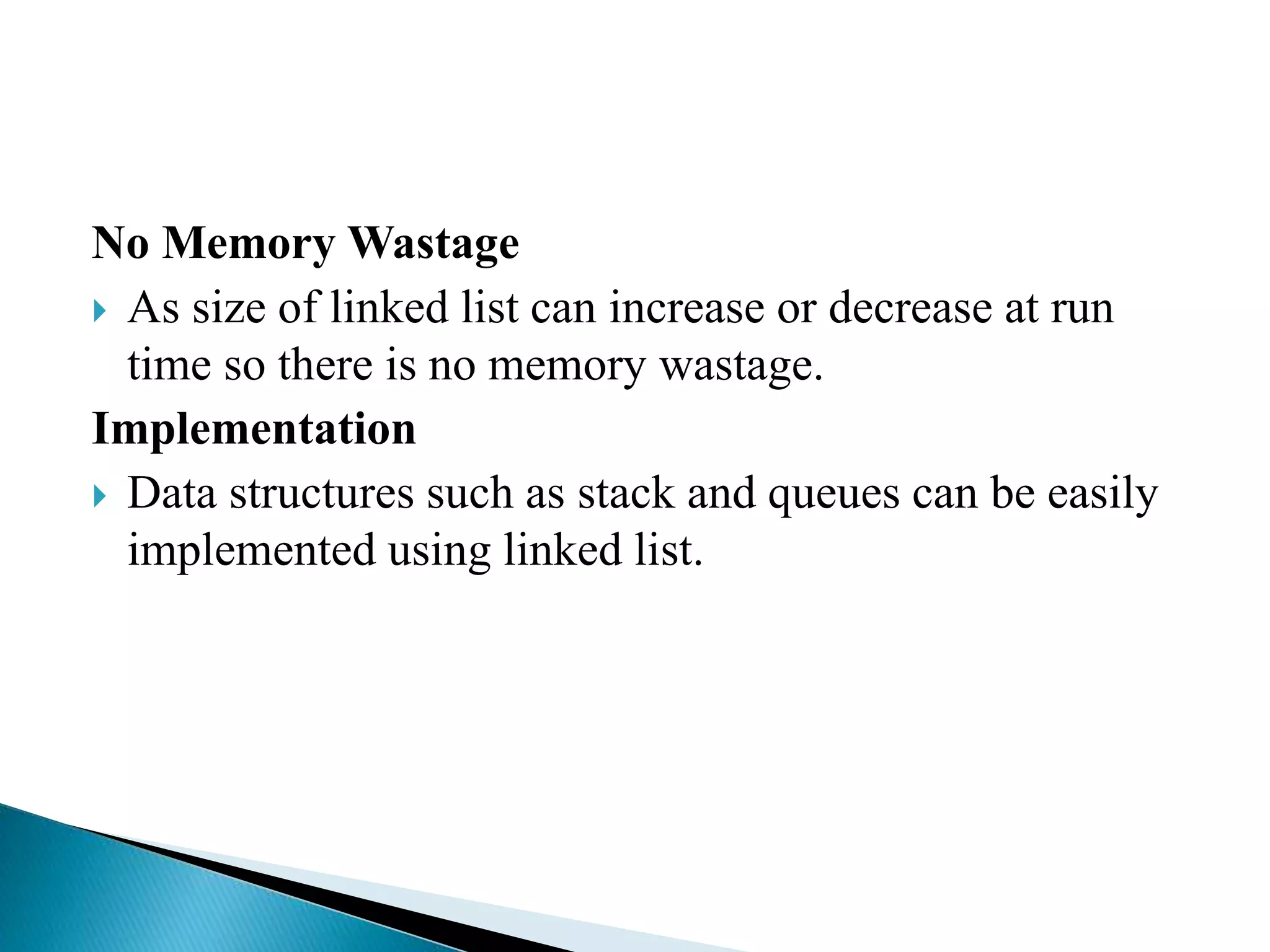
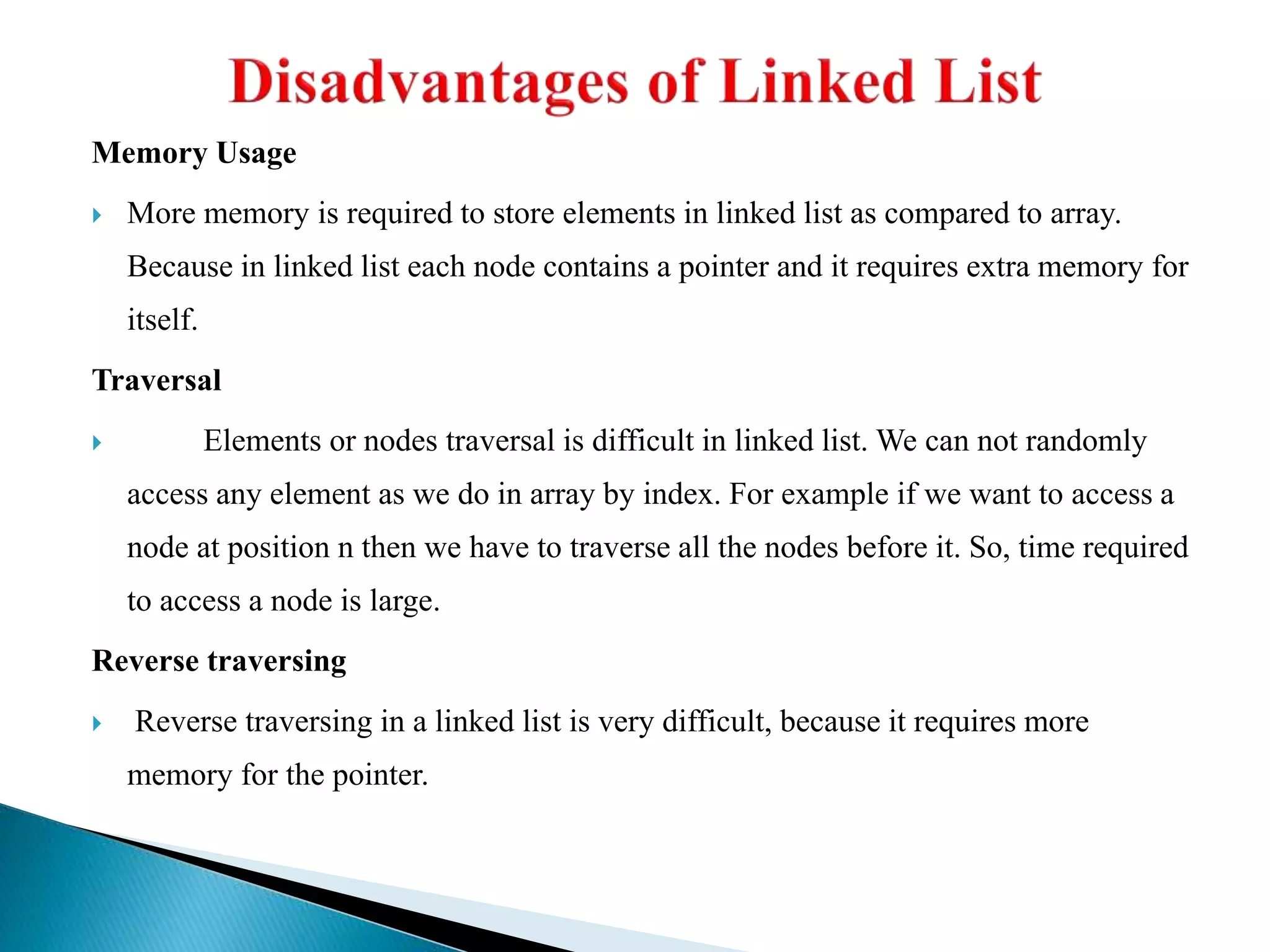

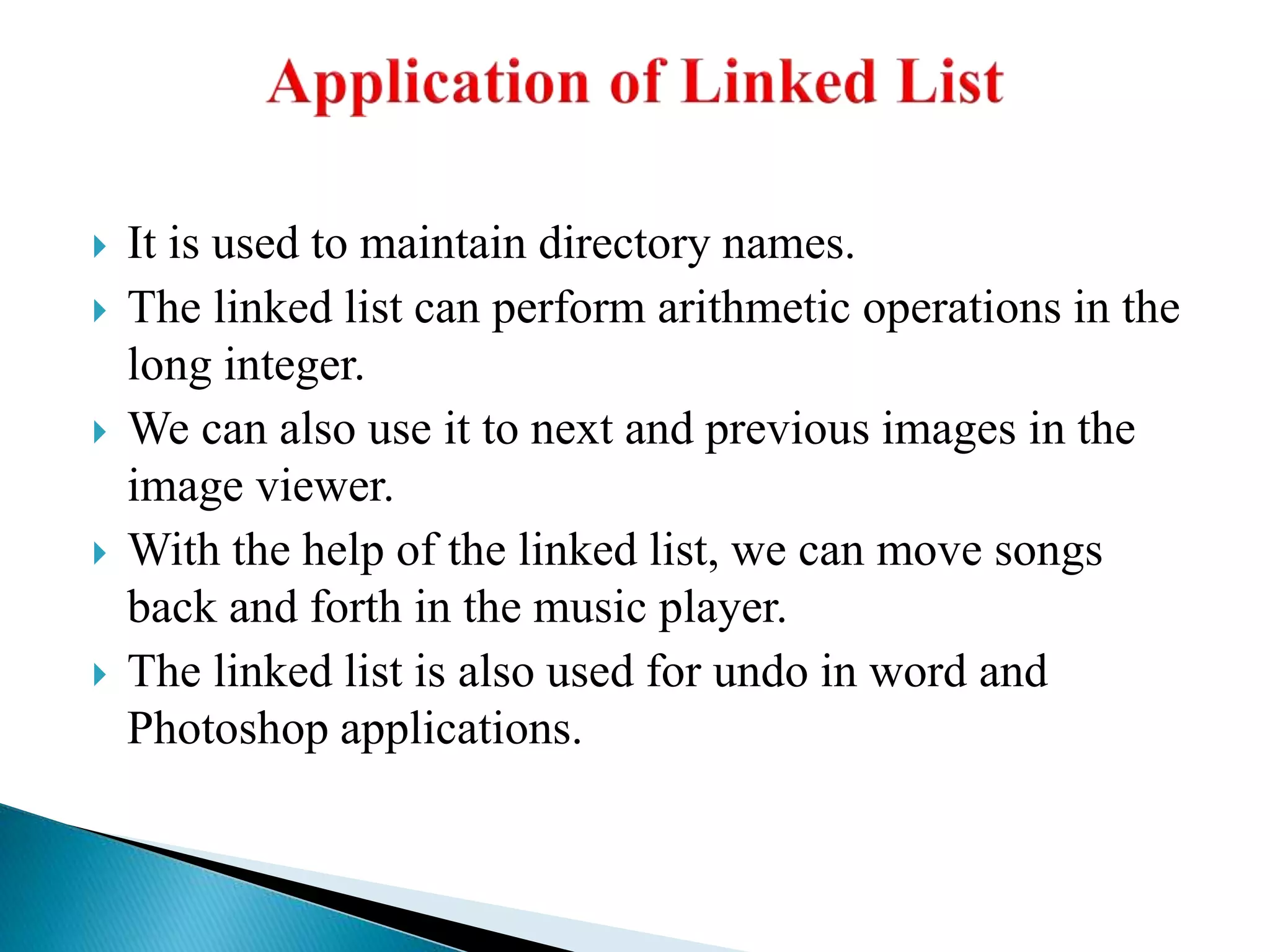



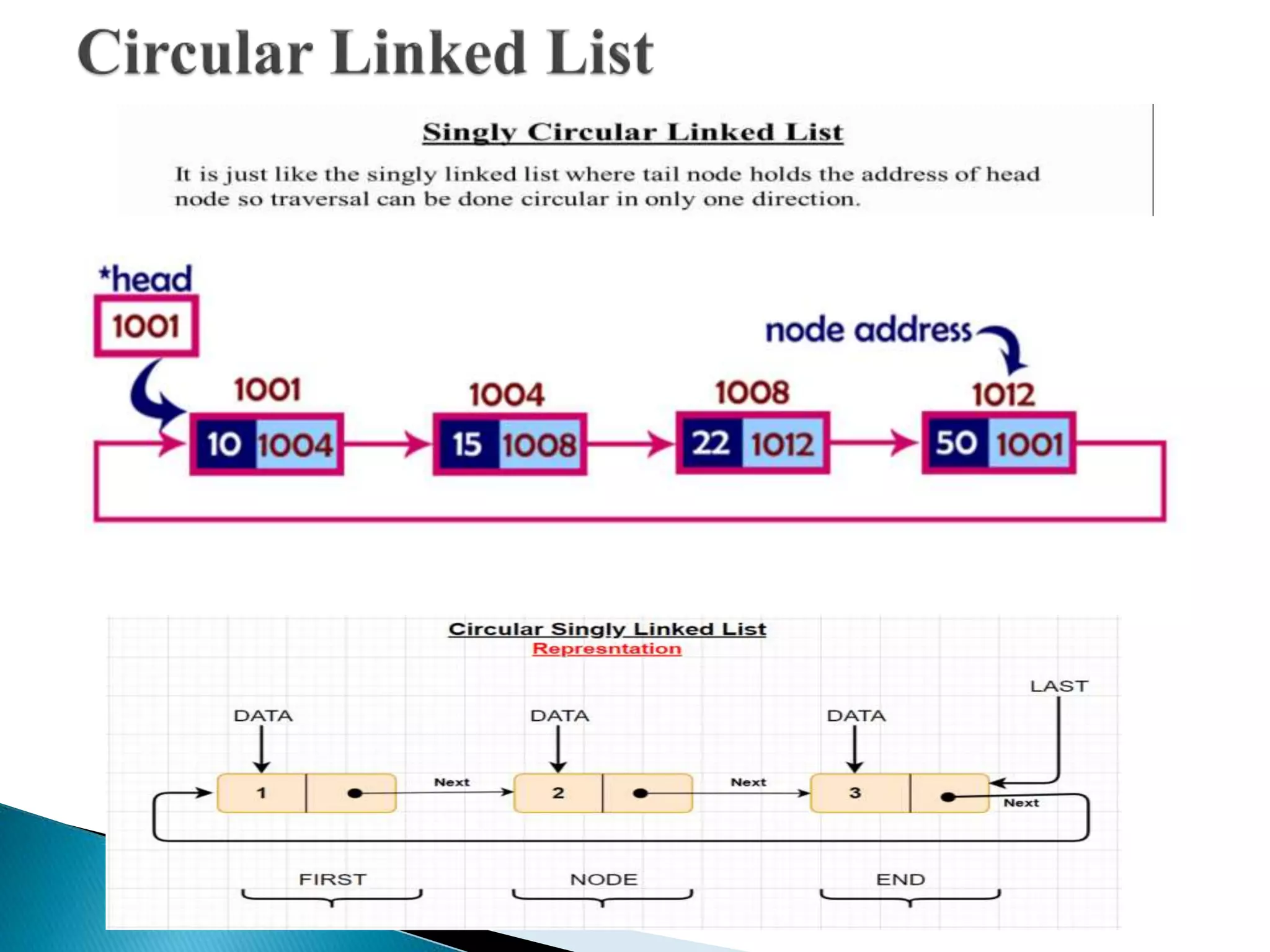

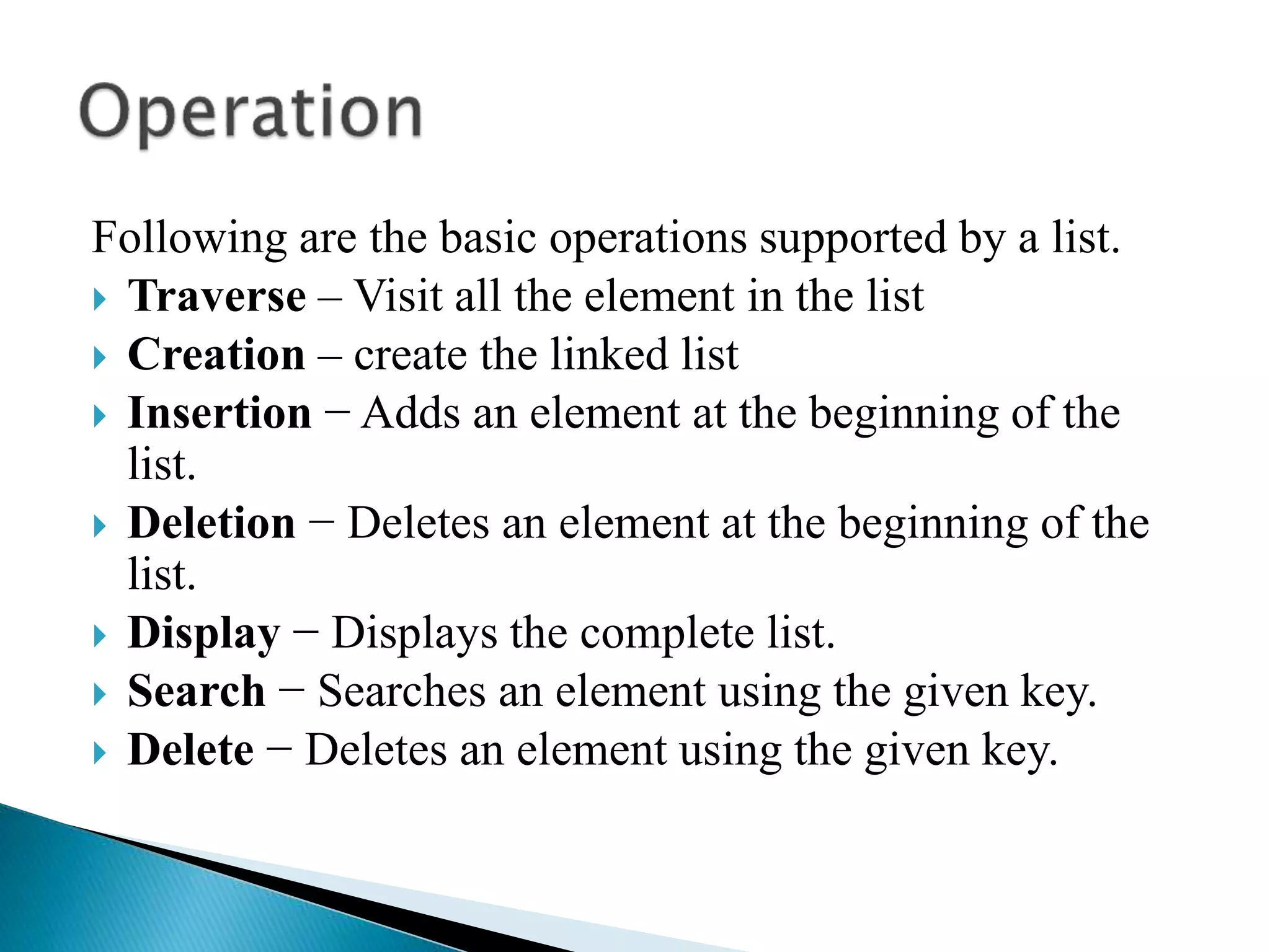

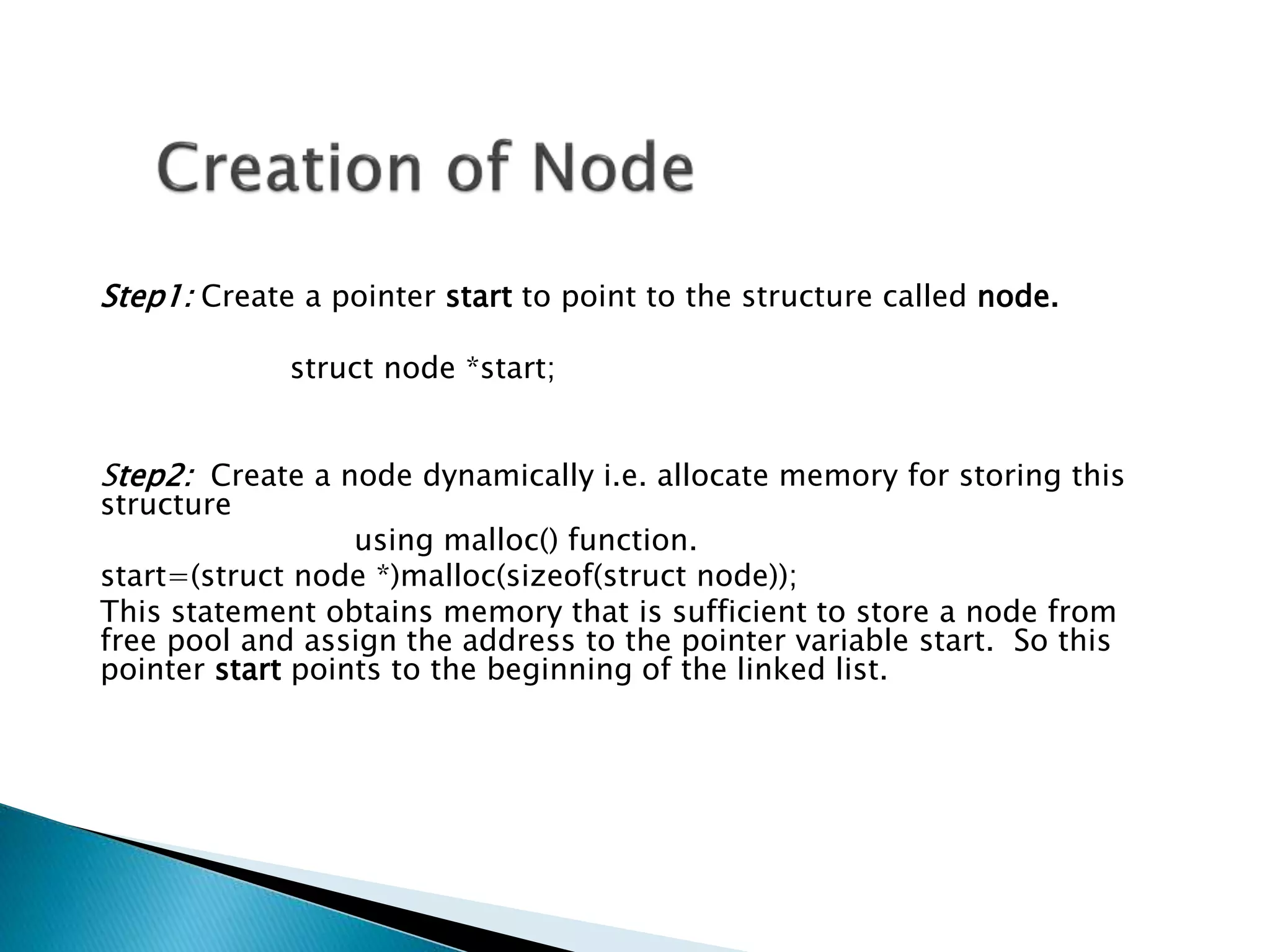
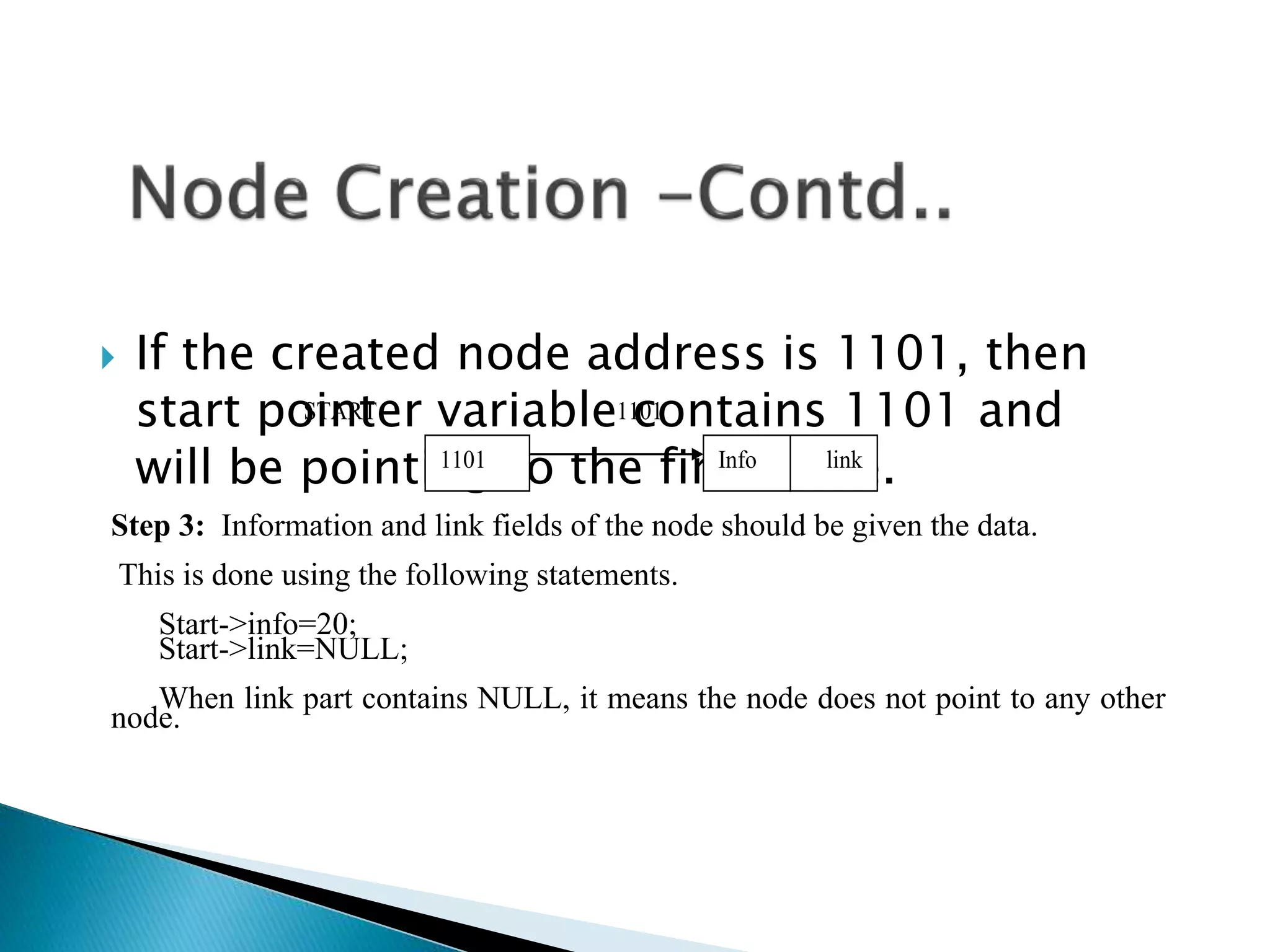

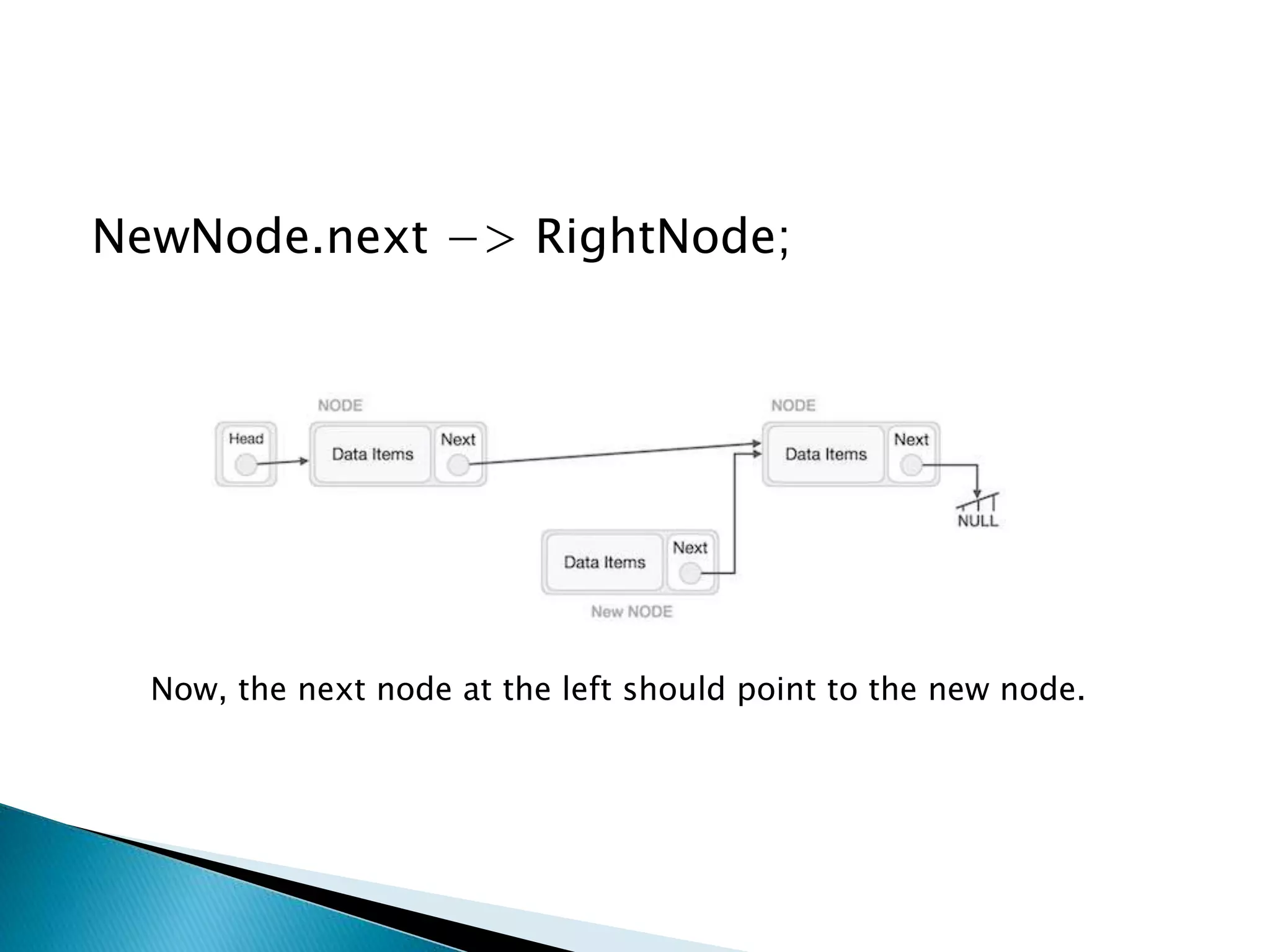




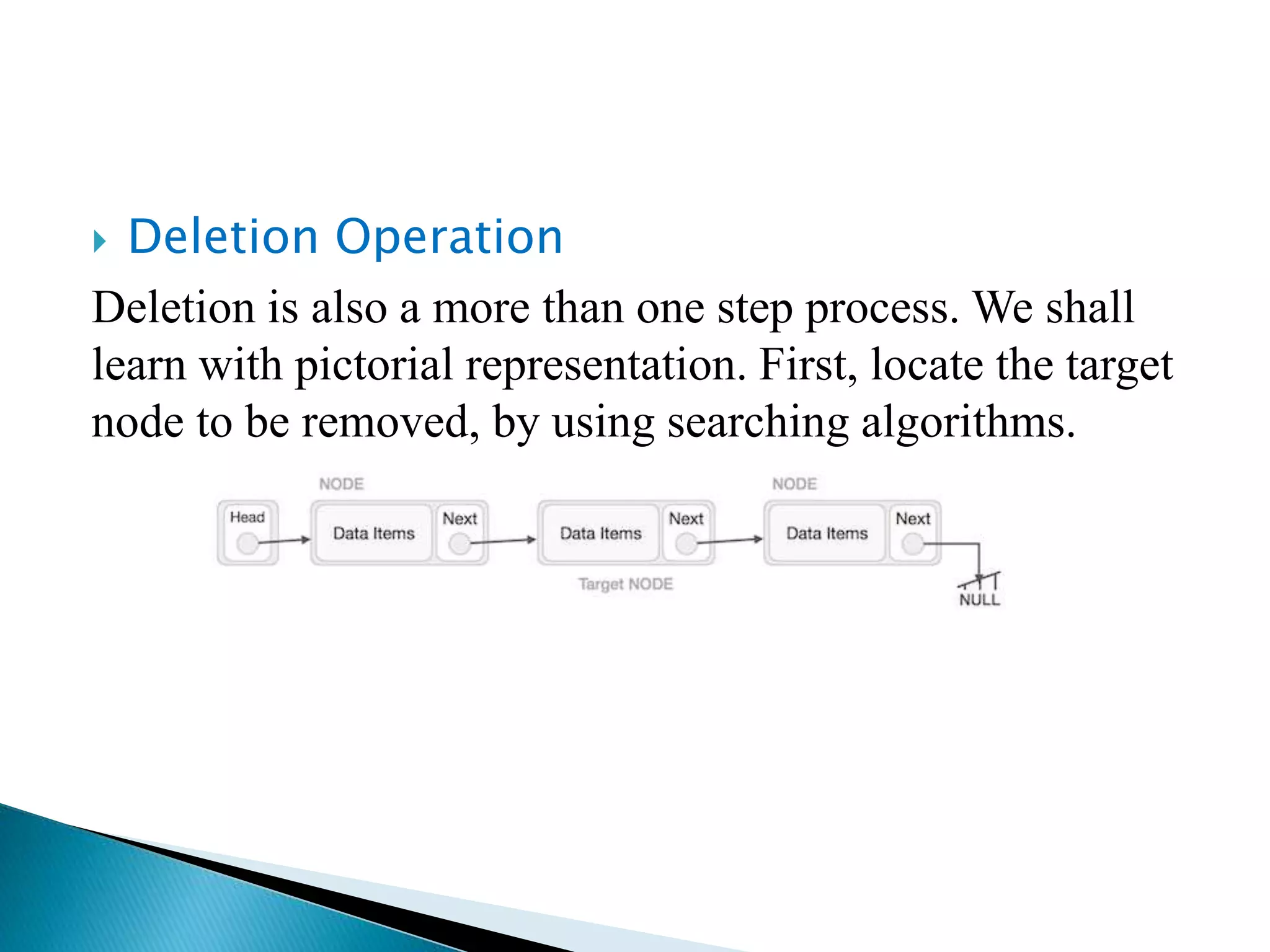
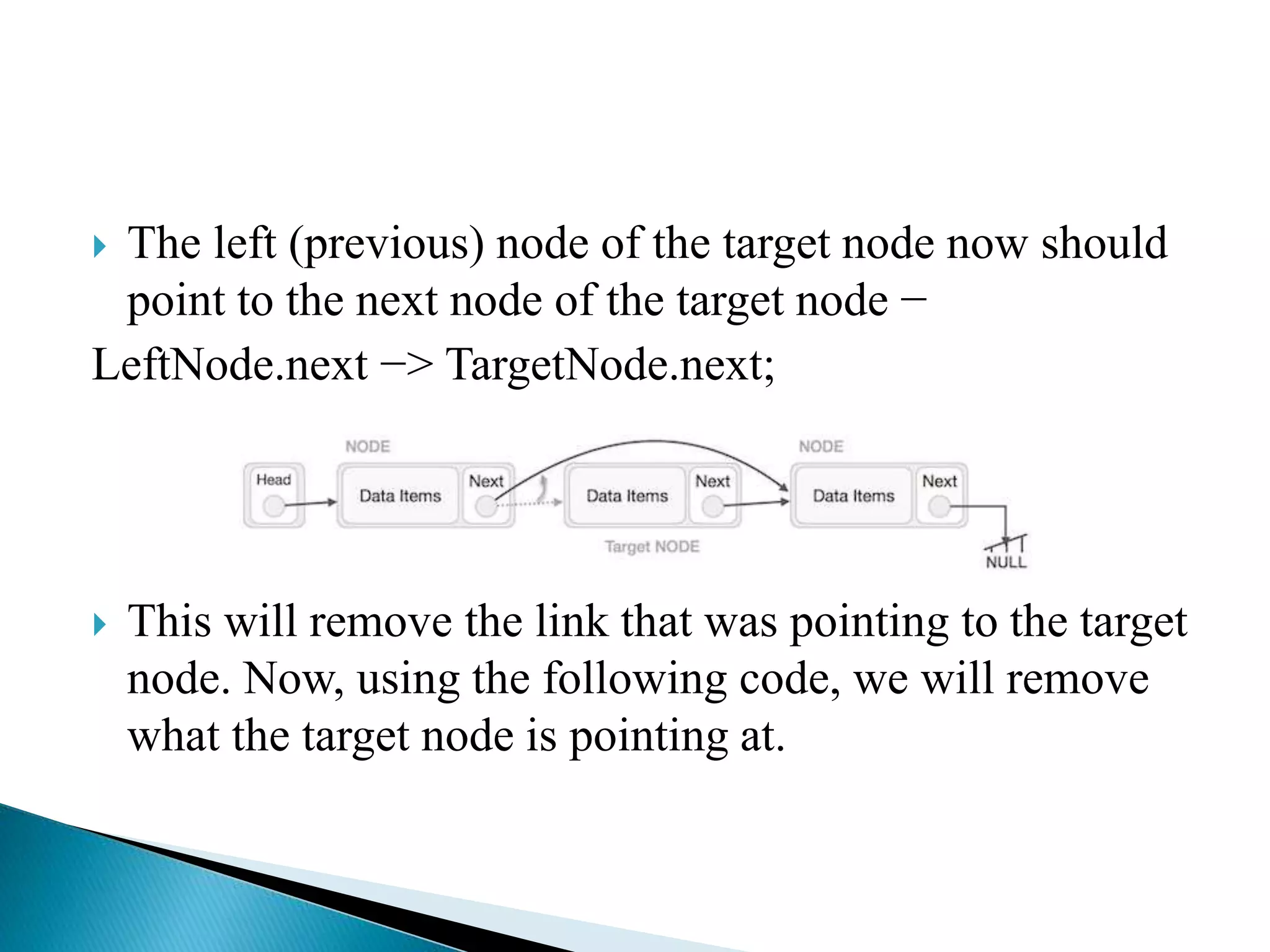

![13. *Using dynamic variables and pointers write a C program to construct a singly linked list consisting of the following information in each node. Roll No (Integer), Name (Character String) .The Operations to be supported are: (a). LINSERT() - Inserting a node(front of the list and after a node) and LDISPLAY() - displaying all the nodes in the linked list. (b). LSEARCH() - Searching a node based on Roll number and LDELETE() - deleting a node based on Roll number. //Linked list #include<stdio.h> #include<string.h> #define null 0 void create(); void display(); void ins_beg(); struct node { int rollno; char name[20]; struct node *link; }; struct node *start=null,*p,*q,*prev; void main() { int ch,i,regno,pos; clrscr(); while(1) { printf("n1.Create a linked list"); printf("n2.Insert a node in front o printf("n3.Insert a node at the en printf("n4.Insert a node at a give printf("n5.Delete a node based o printf("n6.Searching for a node b printf("n7.Display linked list"); printf("n8.Exitn");](https://image.slidesharecdn.com/ds-unit4final-220603121745-37d61080/75/Data-Structures_Linked-List-30-2048.jpg)
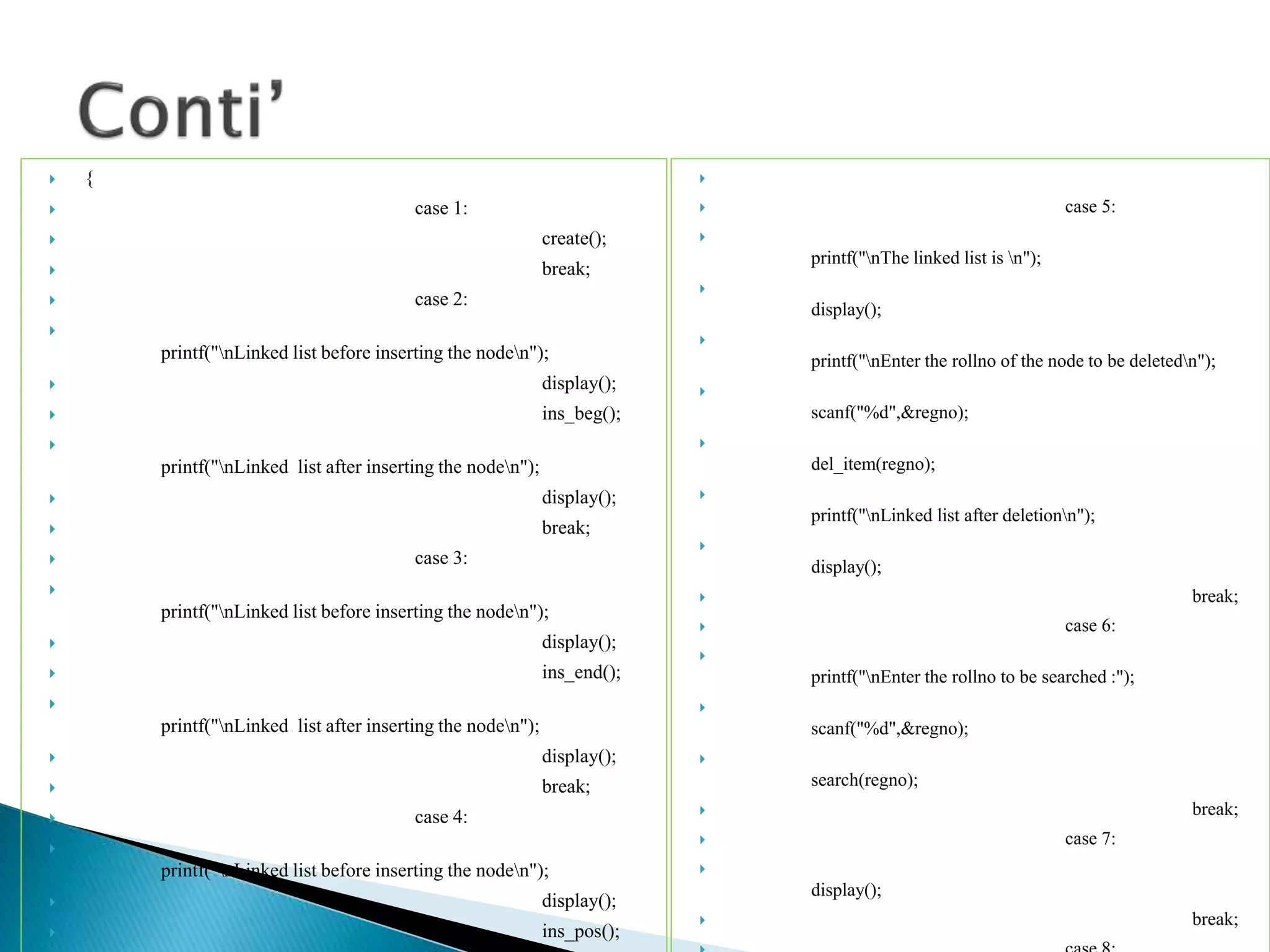
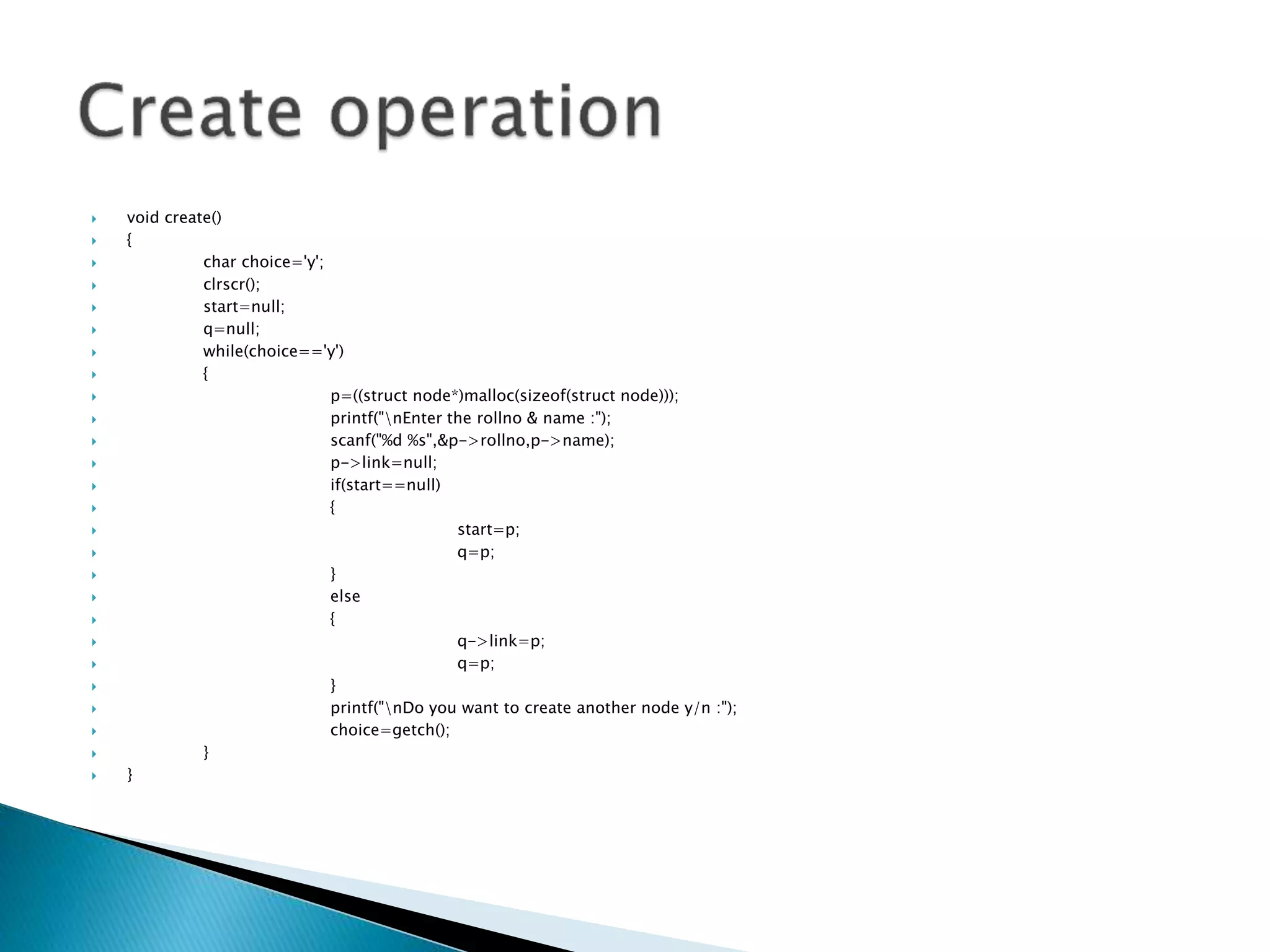
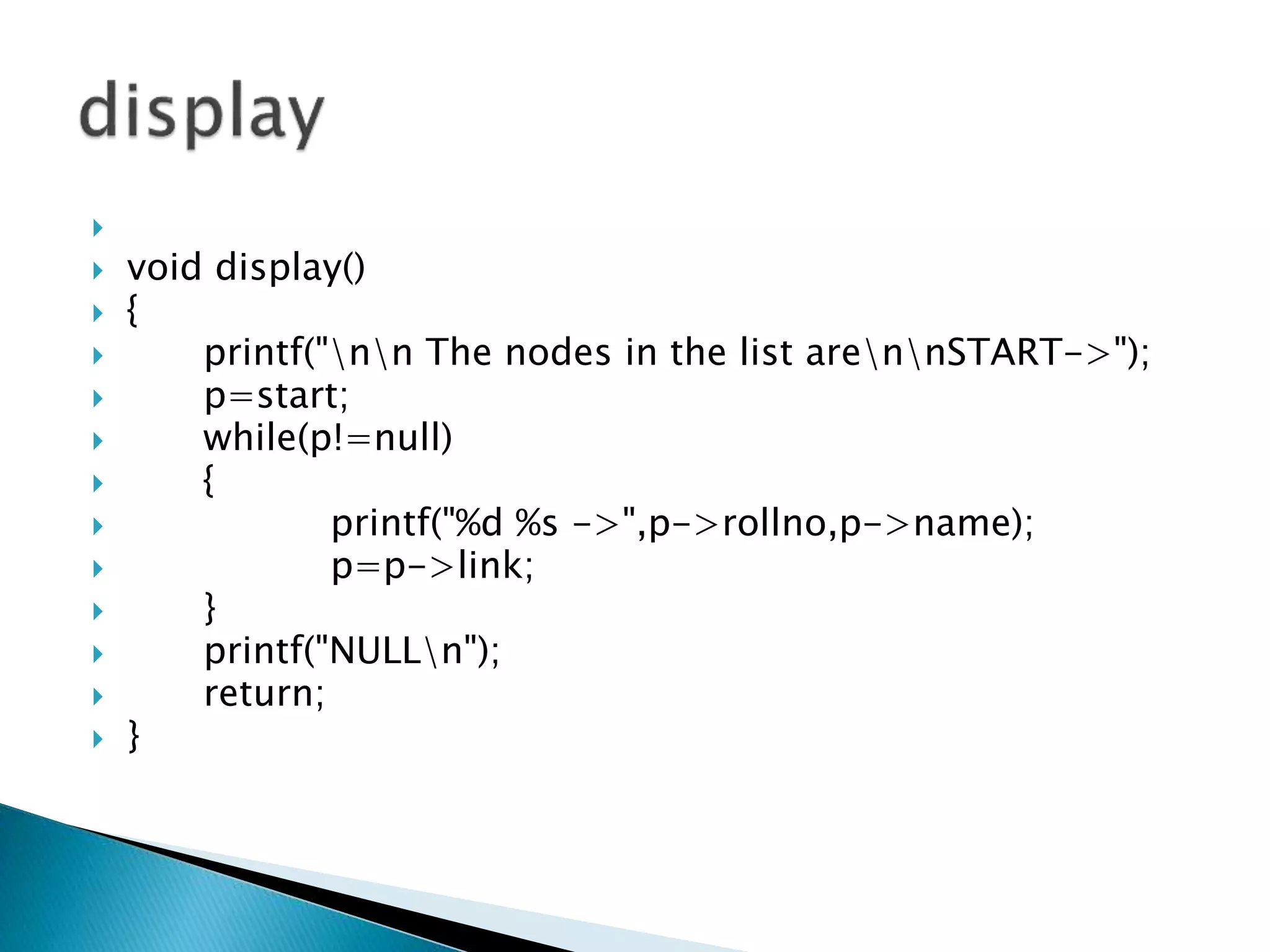


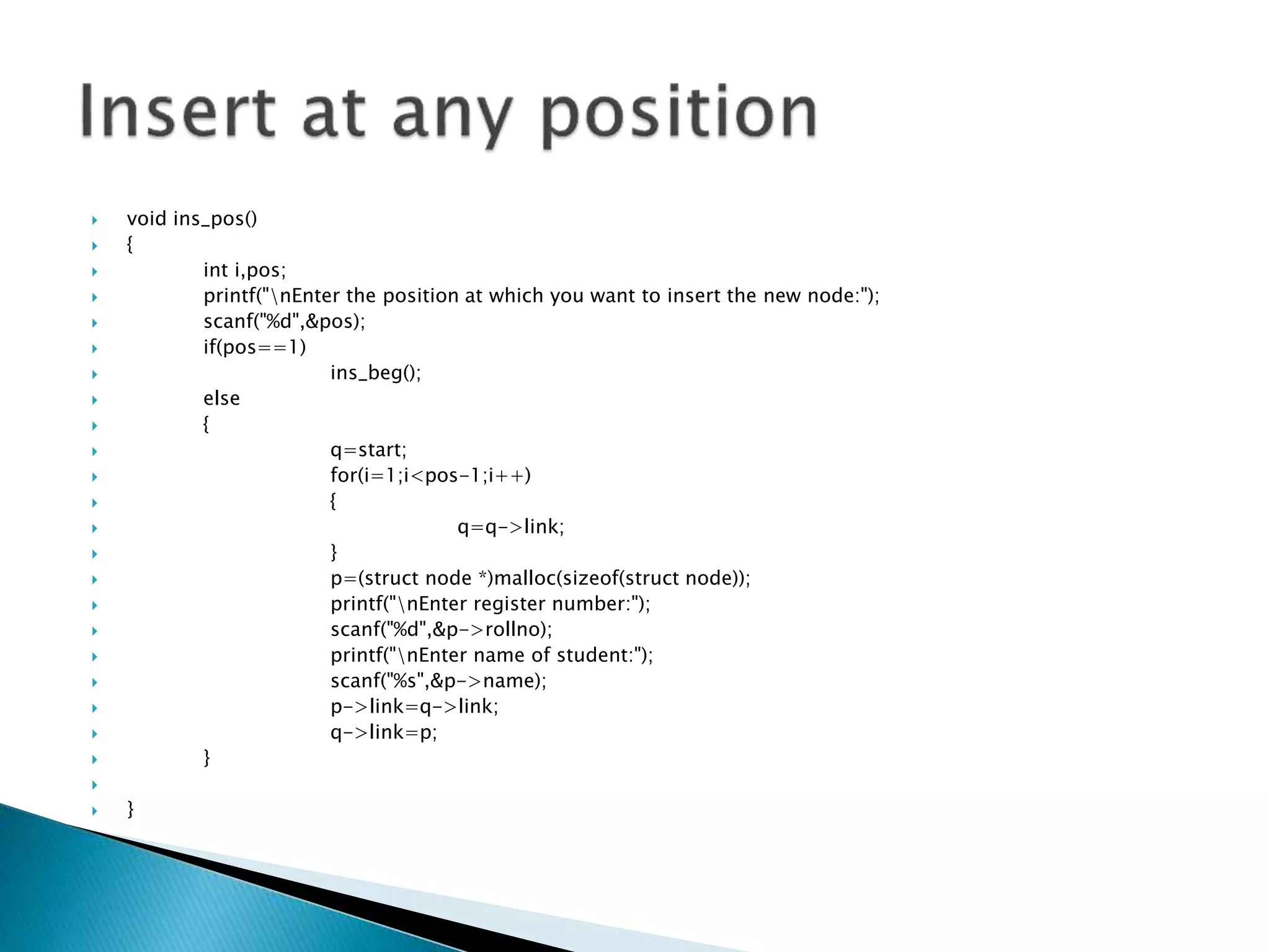
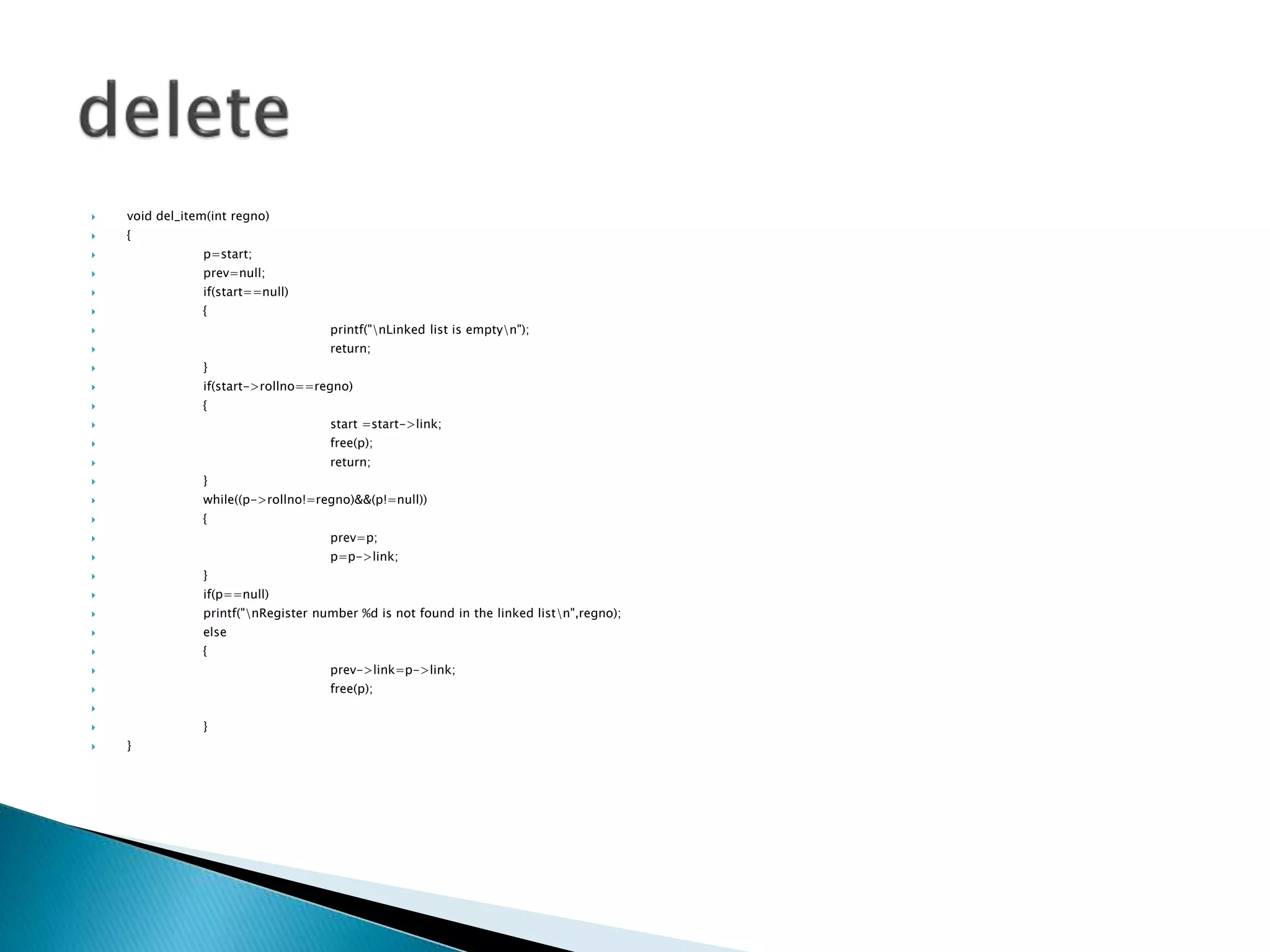

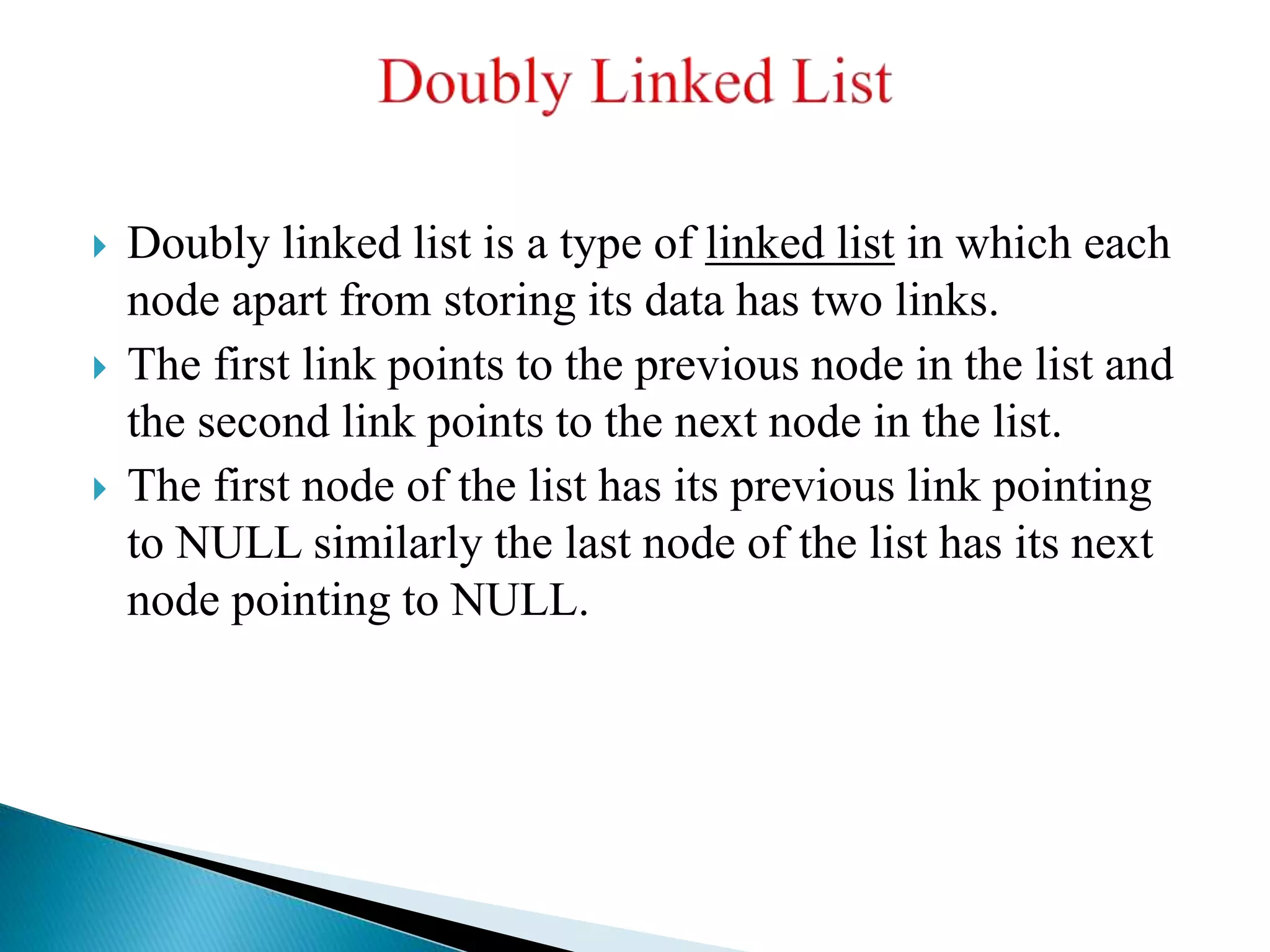

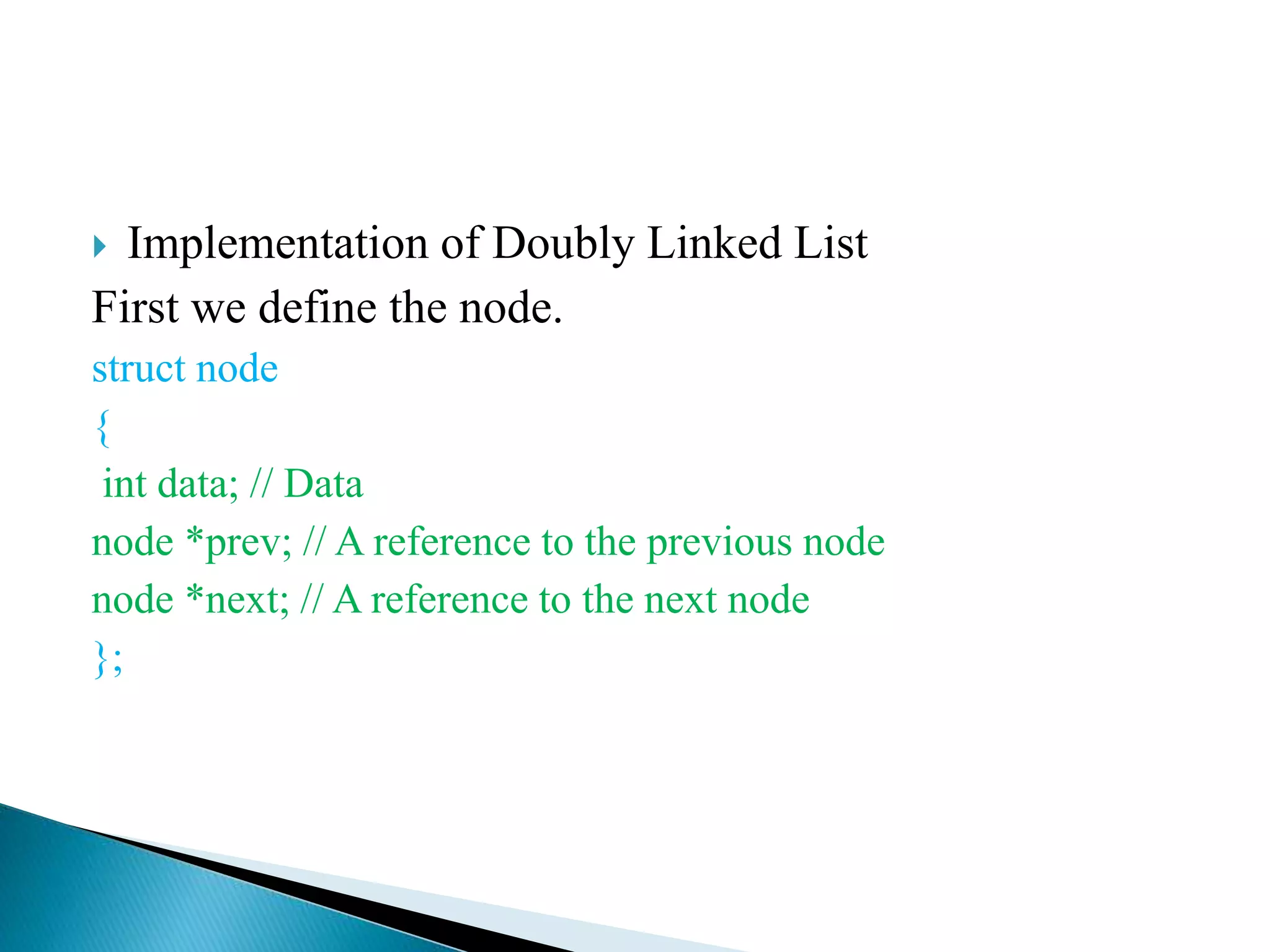

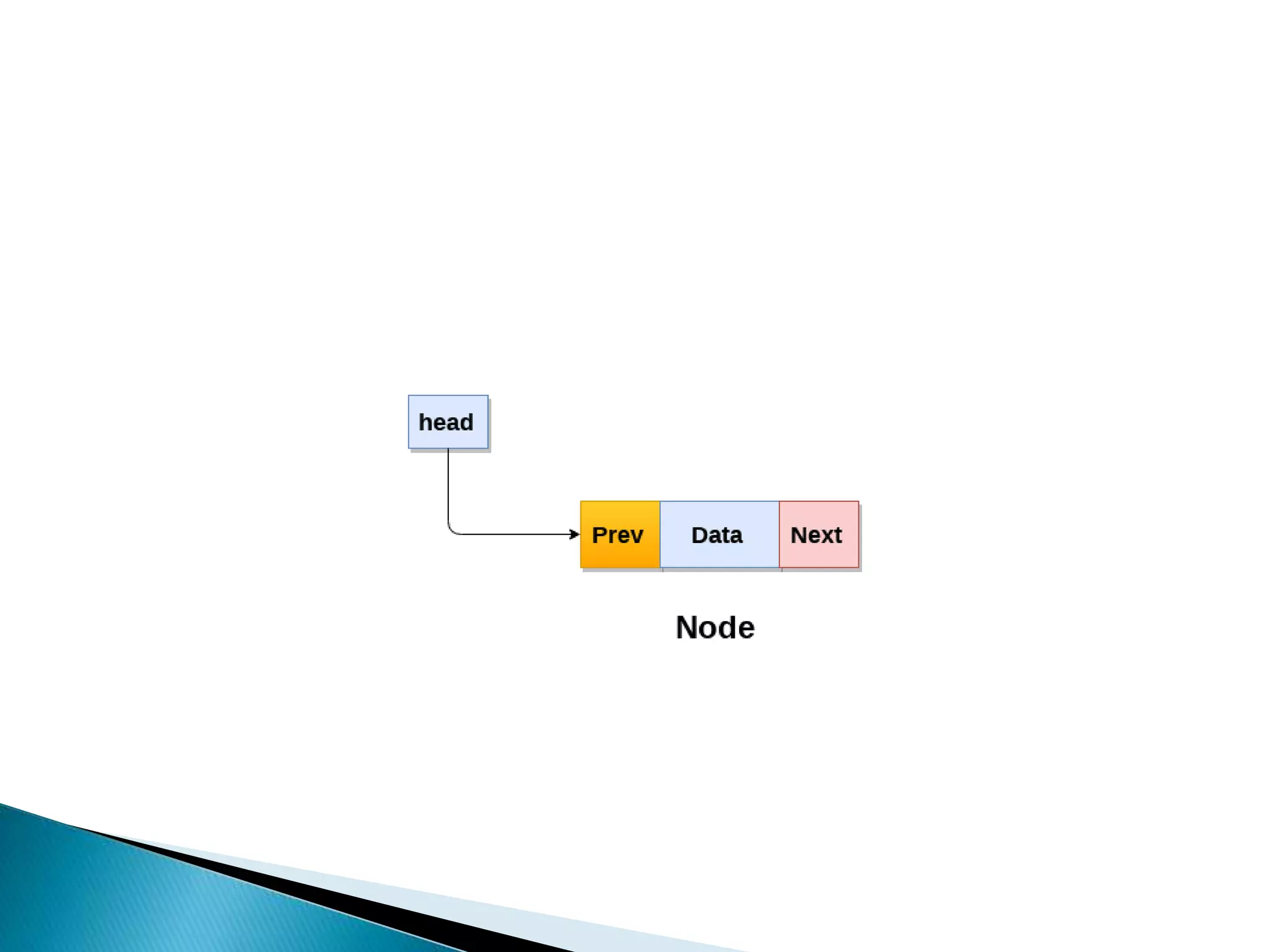

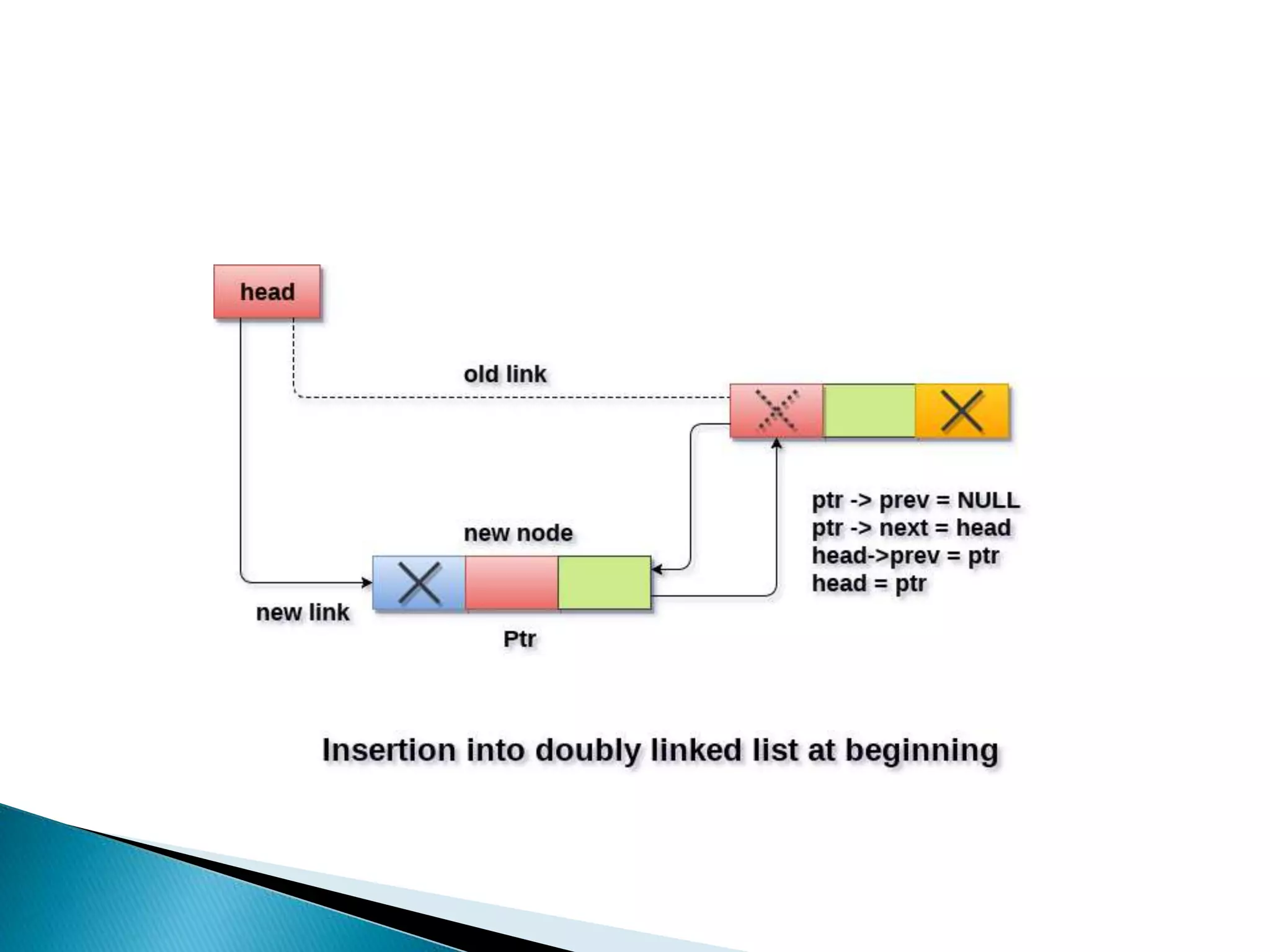
![ Deletion in doubly linked list at the end Step 1: IF HEAD = NULL Write UNDERFLOW Go to Step 7 [END OF IF] Step 2: SET TEMP = HEAD Step 3: REPEAT STEP 4 WHILE TEMP->NEXT != NULL Step 4: SET TEMP = TEMP->NEXT [END OF LOOP] Step 5: SET TEMP ->PREV-> NEXT = NULL Step 6: FREE TEMP Step 7: EXIT](https://image.slidesharecdn.com/ds-unit4final-220603121745-37d61080/75/Data-Structures_Linked-List-46-2048.jpg)

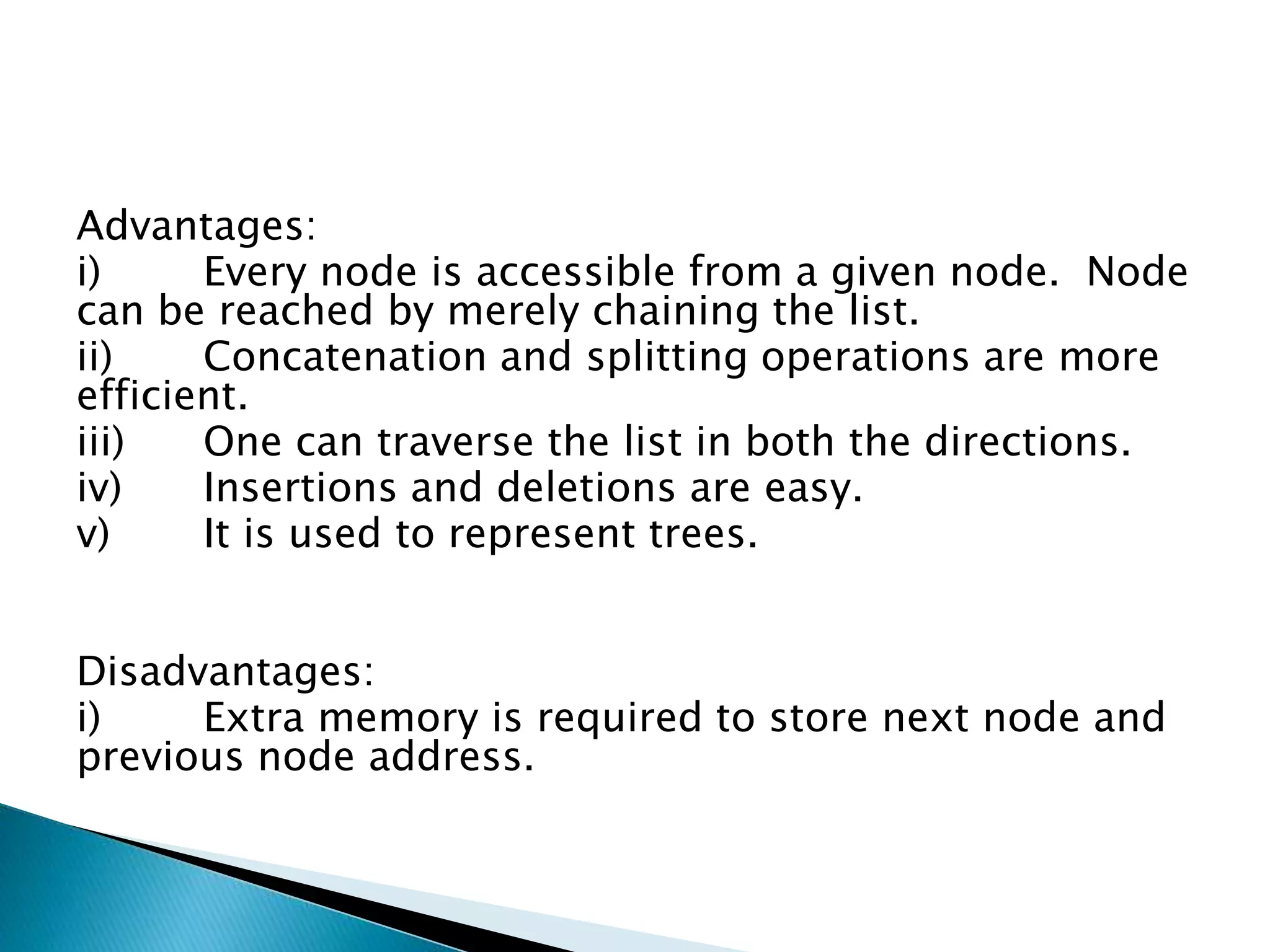


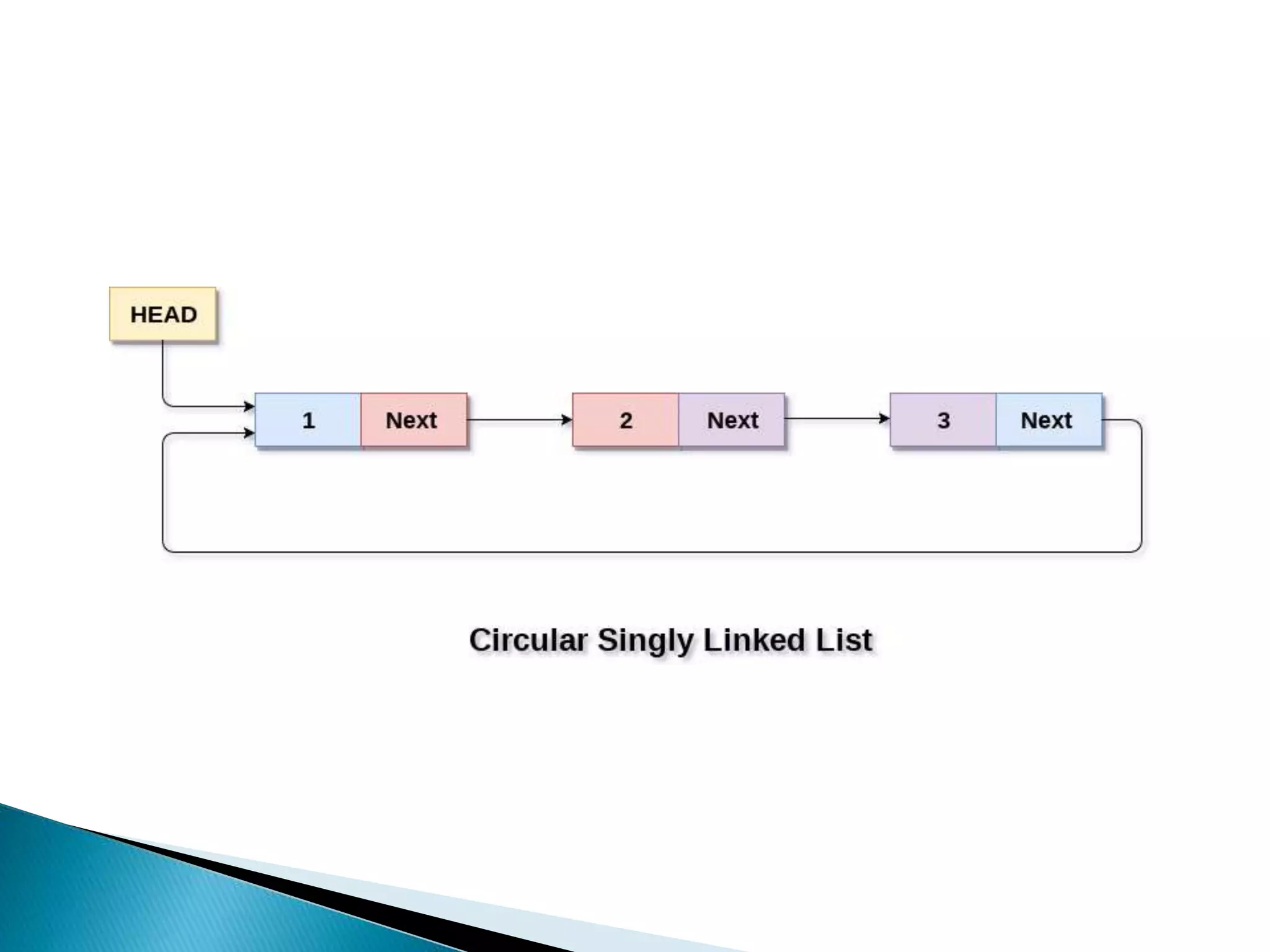
![Step 1: IF PTR = NULL Write OVERFLOW Go to Step 11 [END OF IF] Step 2: SET NEW_NODE = PTR Step 3: SET PTR = PTR -> NEXT Step 4: SET NEW_NODE -> DATA = VAL Step 5: SET TEMP = HEAD Step 6: Repeat Step 8 while TEMP -> NEXT != HEAD Step 7: SET TEMP = TEMP -> NEXT [END OF LOOP] Step 8: SET NEW_NODE -> NEXT = HEAD Step 9: SET TEMP → NEXT = NEW_NODE Step 10: SET HEAD = NEW_NODE Step 11: EXIT](https://image.slidesharecdn.com/ds-unit4final-220603121745-37d61080/75/Data-Structures_Linked-List-52-2048.jpg)
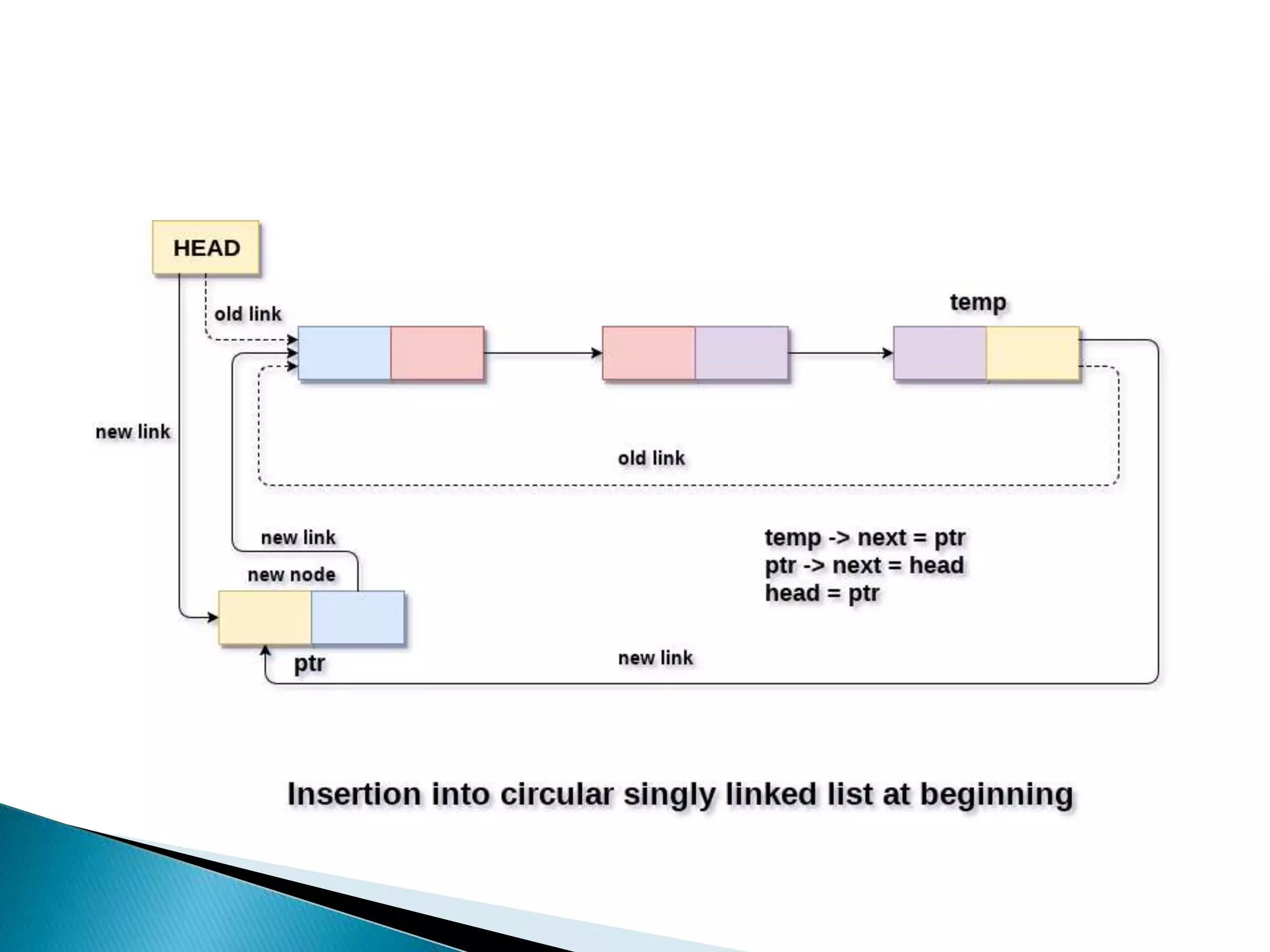
![ Deletion in Circular singly linked list at the end Algorithm Step 1: IF HEAD = NULL Write UNDERFLOW Go to Step 8 [END OF IF] Step 2: SET PTR = HEAD Step 3: Repeat Steps 4 and 5 while PTR -> NEXT != HEAD Step 4: SET PREPTR = PTR Step 5: SET PTR = PTR -> NEXT [END OF LOOP] Step 6: SET PREPTR -> NEXT = HEAD Step 7: FREE PTR Step 8: EXIT](https://image.slidesharecdn.com/ds-unit4final-220603121745-37d61080/75/Data-Structures_Linked-List-54-2048.jpg)
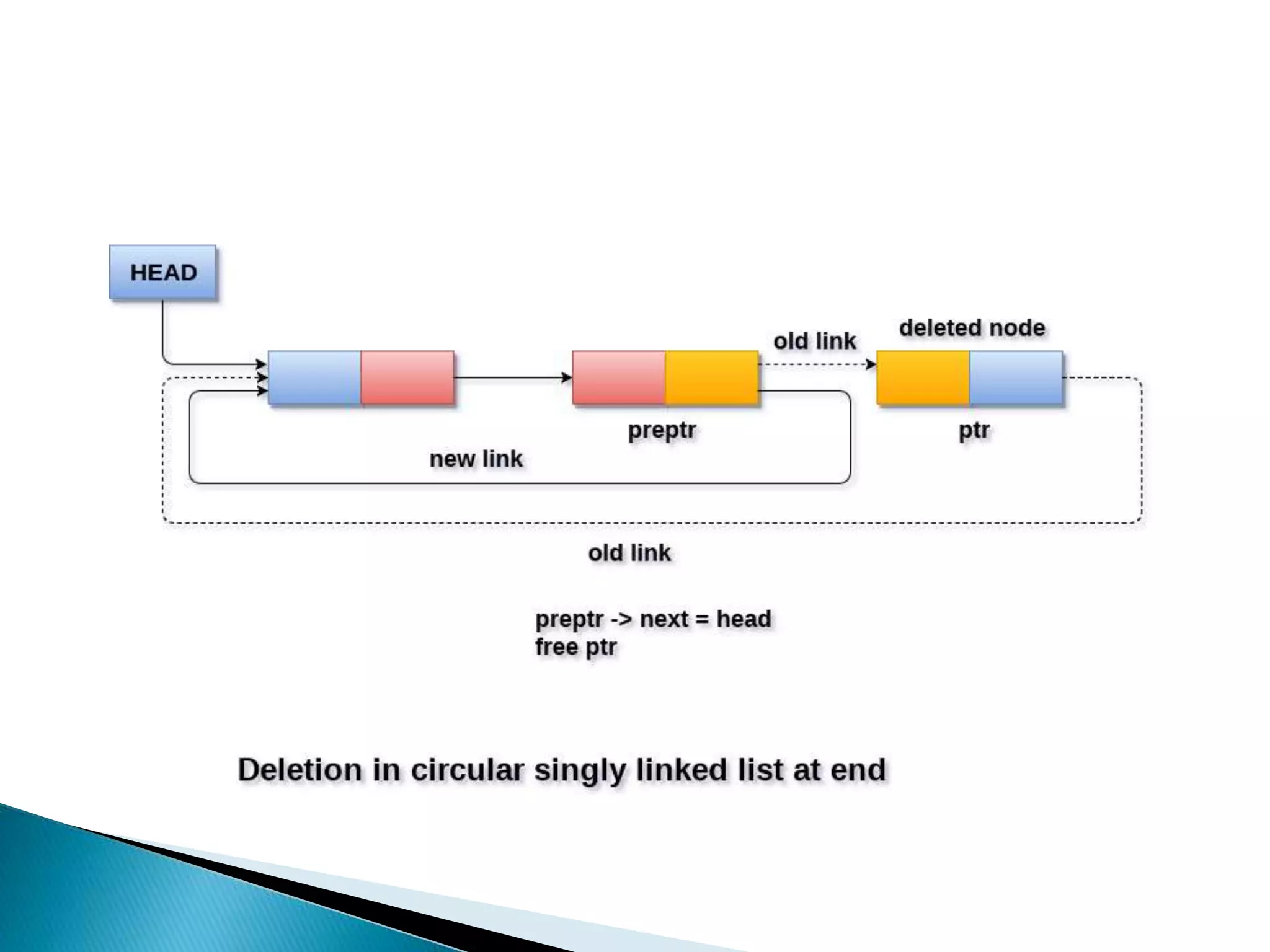
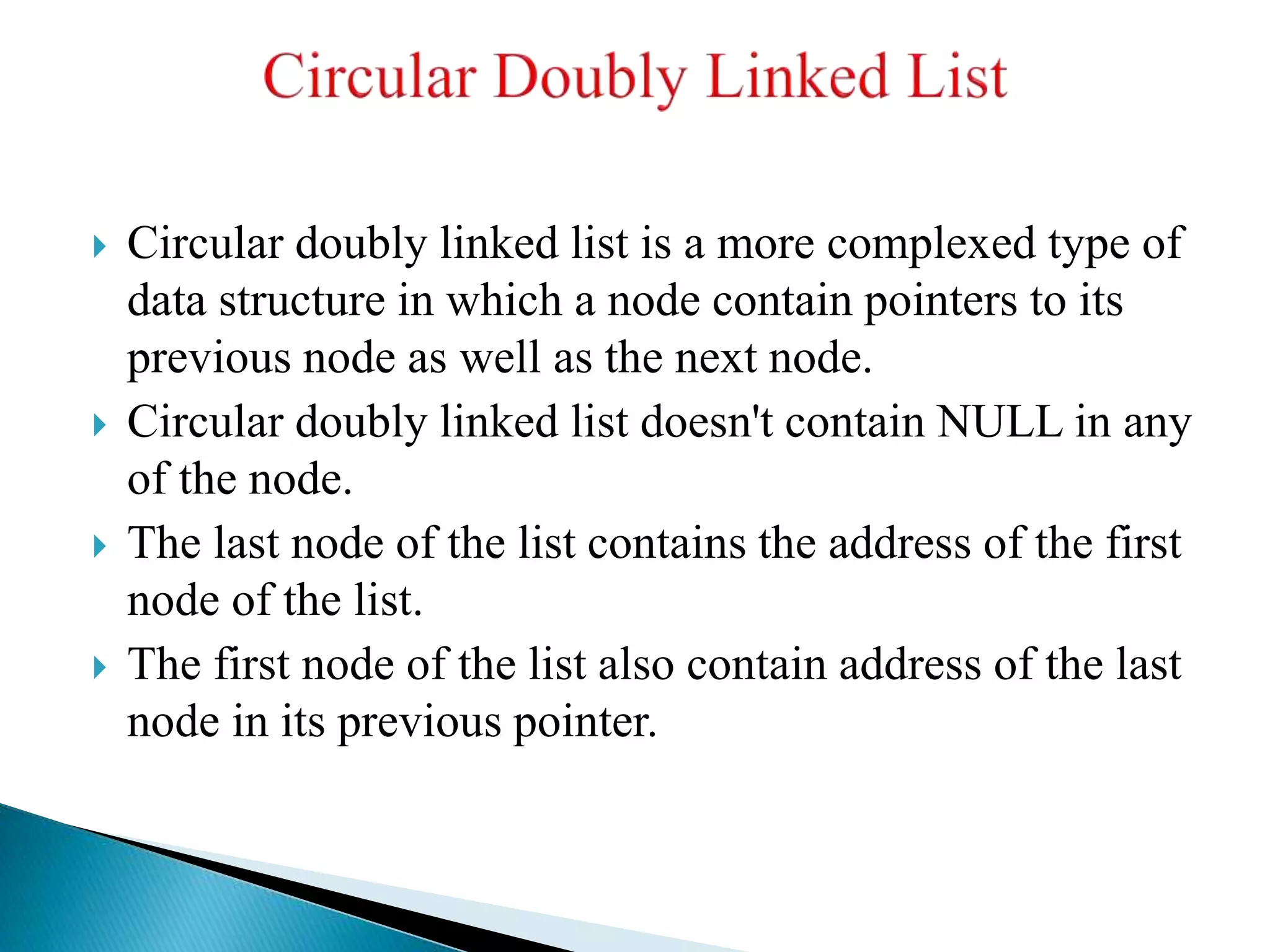
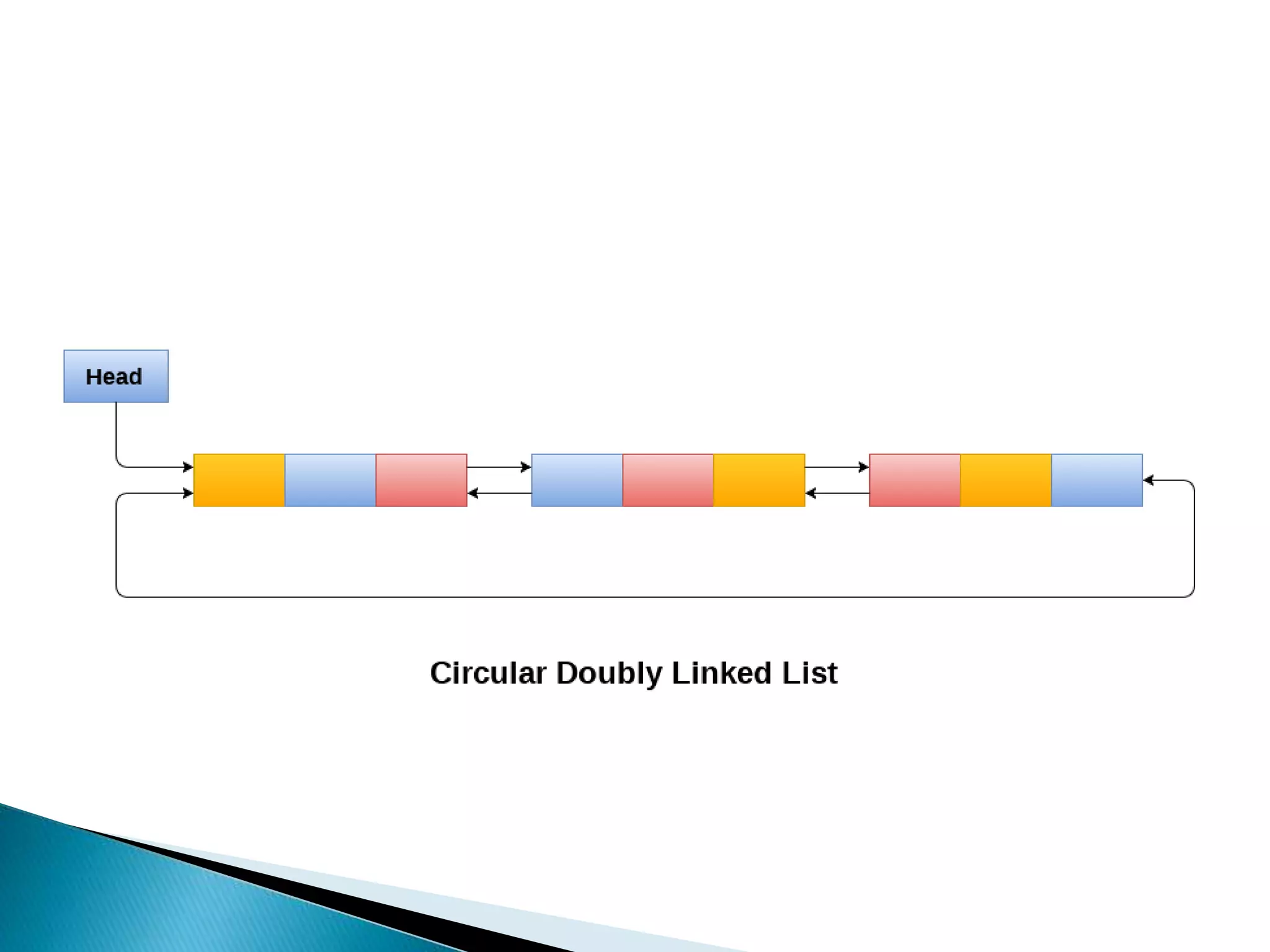
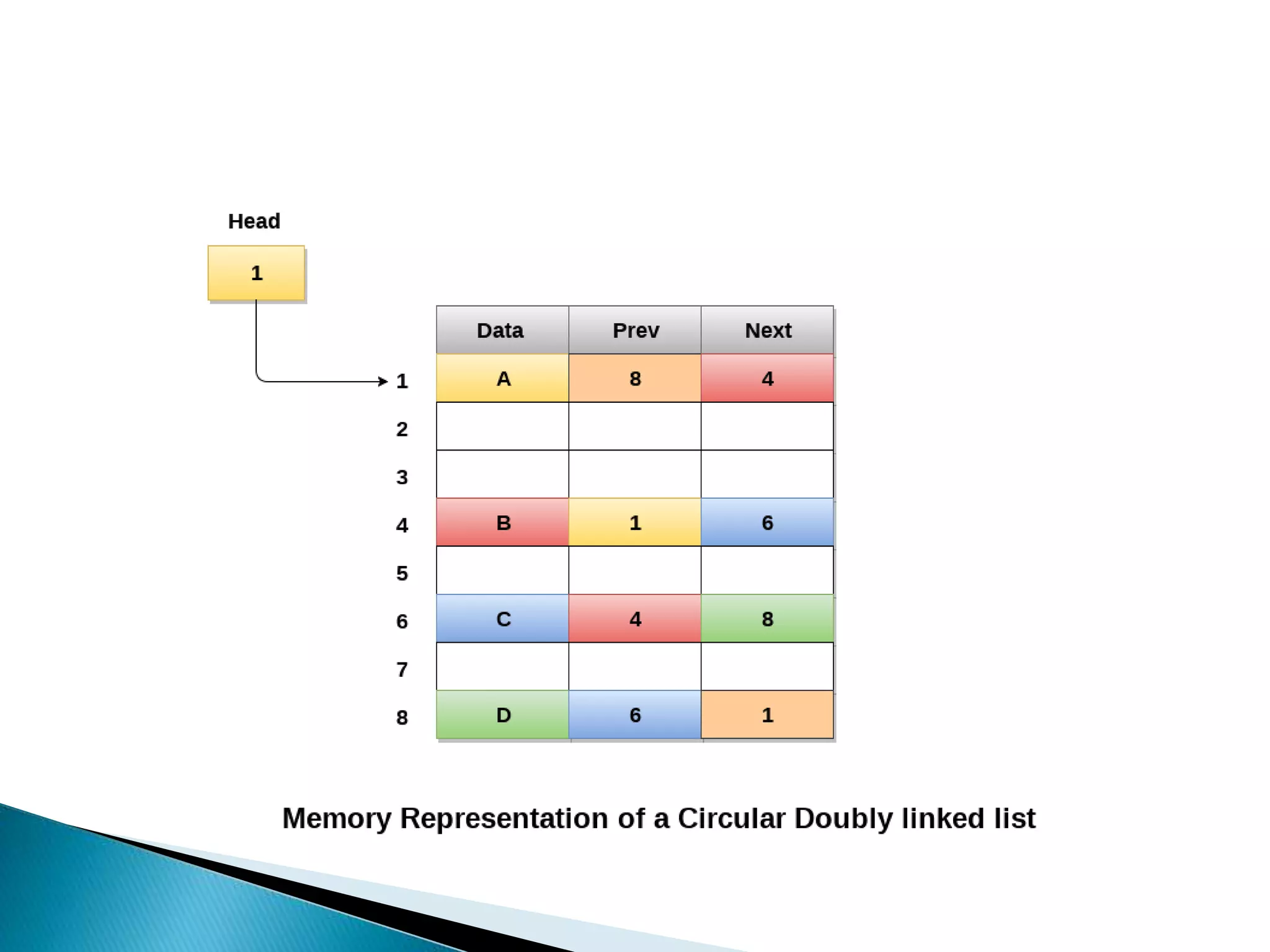
![Algorithm Step 1: IF PTR = NULL Write OVERFLOW Go to Step 13 [END OF IF] Step 2: SET NEW_NODE = PTR Step 3: SET PTR = PTR -> NEXT Step 4: SET NEW_NODE -> DATA = VAL Step 5: SET TEMP = HEAD Step 6: Repeat Step 7 while TEMP -> NEXT != HEAD Step 7: SET TEMP = TEMP -> NEXT [END OF LOOP] Step 8: SET TEMP -> NEXT = NEW_NODE Step 9: SET NEW_NODE -> PREV = TEMP Step 1 : SET NEW_NODE -> NEXT = HEAD Step 11: SET HEAD -> PREV = NEW_NODE Step 12: SET HEAD = NEW_NODE Step 13: EXIT](https://image.slidesharecdn.com/ds-unit4final-220603121745-37d61080/75/Data-Structures_Linked-List-59-2048.jpg)
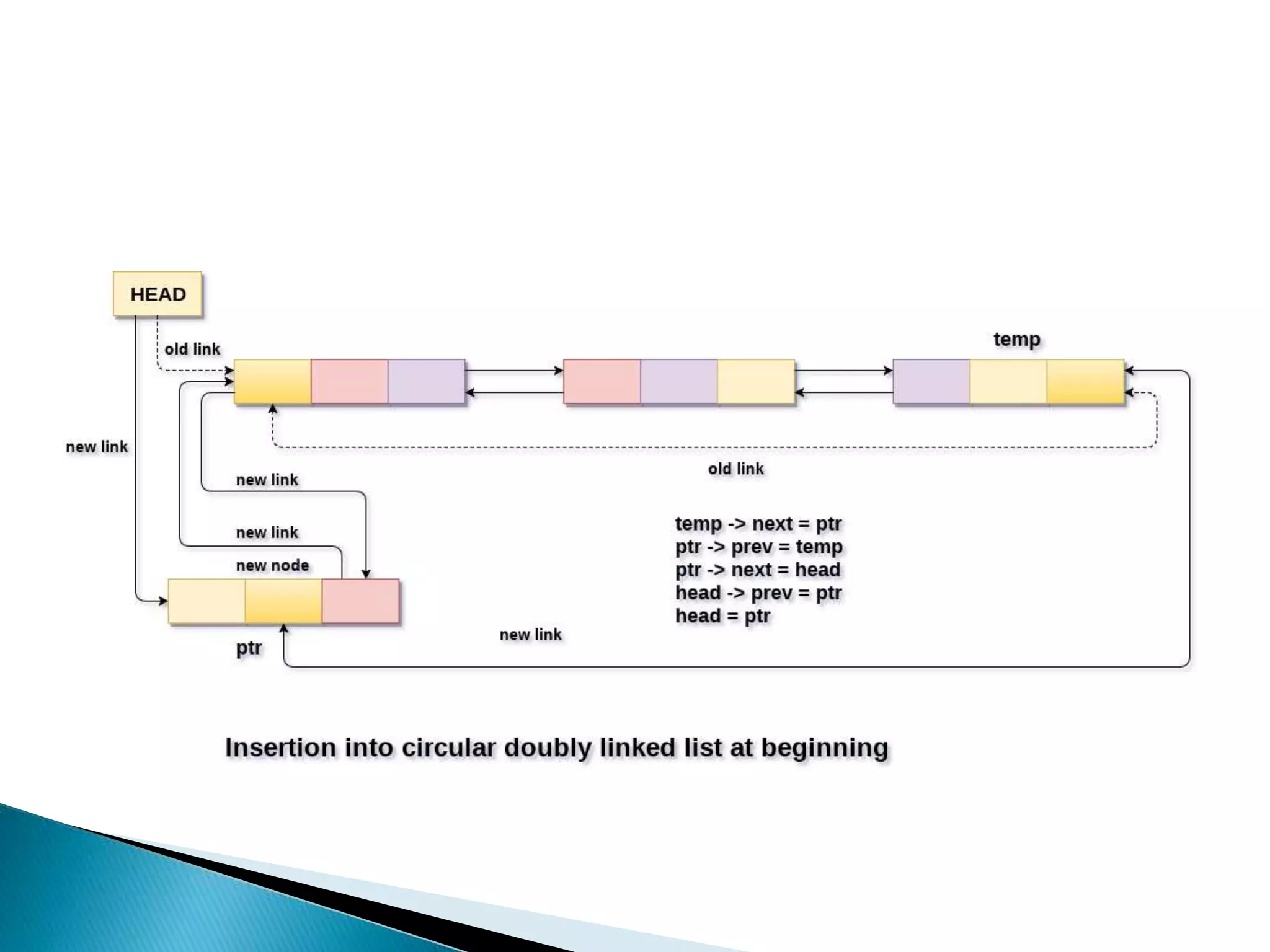
![Algorithm Step 1: IF HEAD = NULL Write UNDERFLOW Go to Step 8 [END OF IF] Step 2: SET TEMP = HEAD Step 3: Repeat Step 4 while TEMP -> NEXT != HEAD Step 4: SET TEMP = TEMP -> NEXT [END OF LOOP] Step 5: SET TEMP -> PREV -> NEXT = HEAD Step 6: SET HEAD -> PREV = TEMP -> PREV Step 7: FREE TEMP Step 8: EXIT](https://image.slidesharecdn.com/ds-unit4final-220603121745-37d61080/75/Data-Structures_Linked-List-61-2048.jpg)

